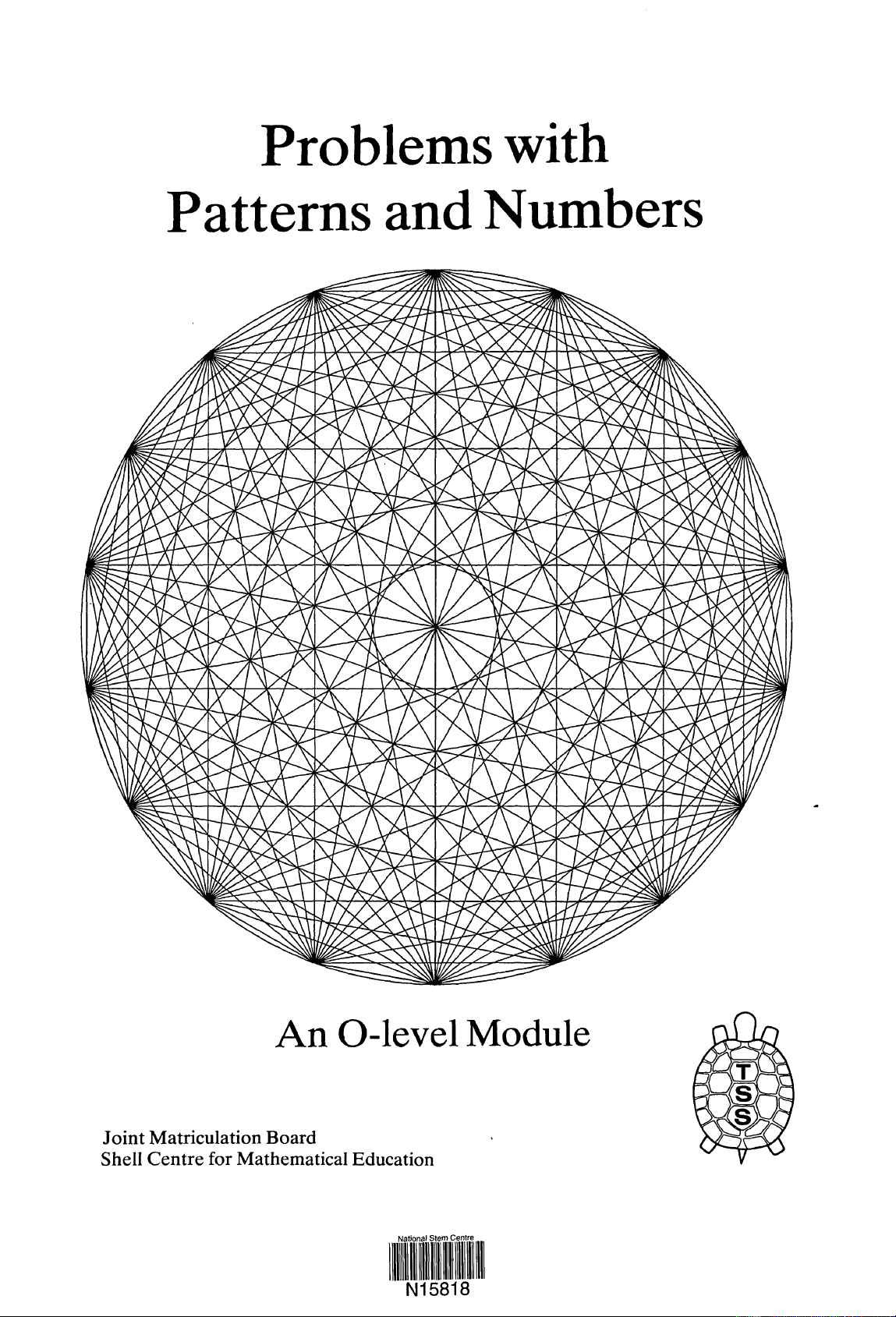

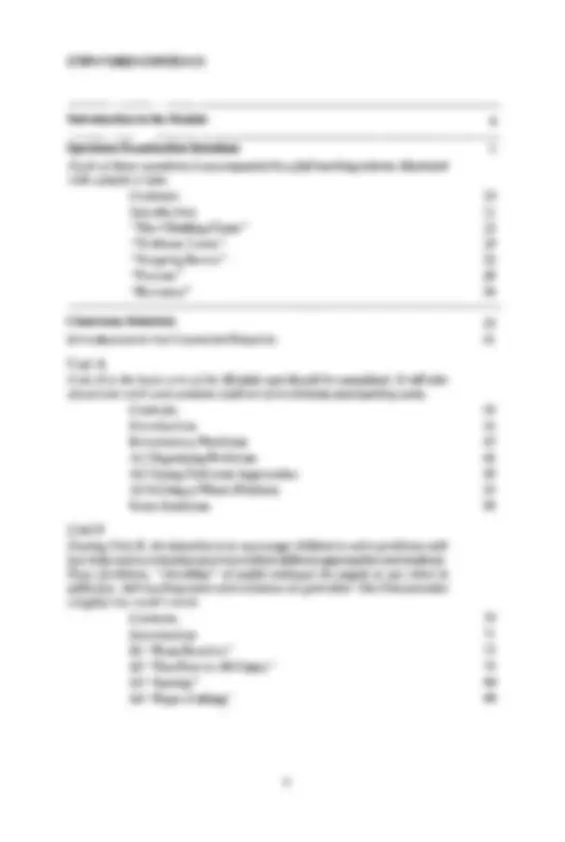
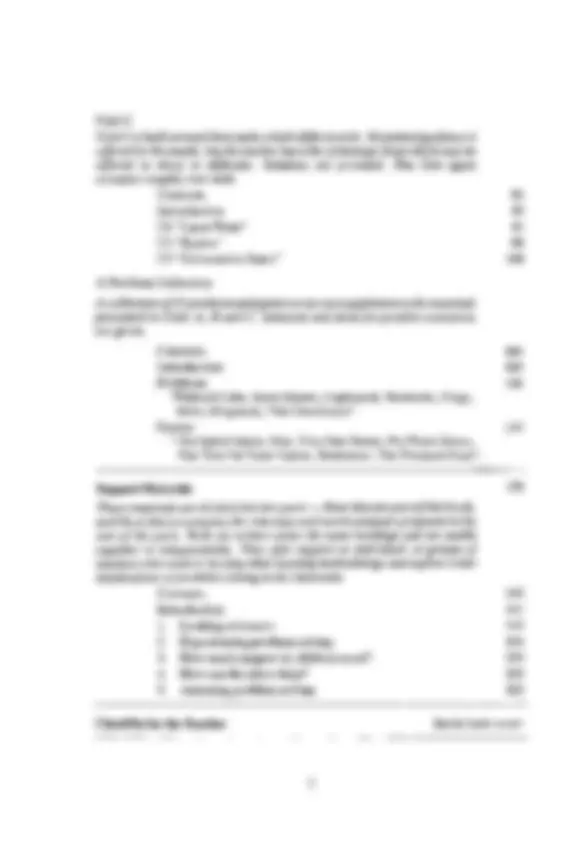

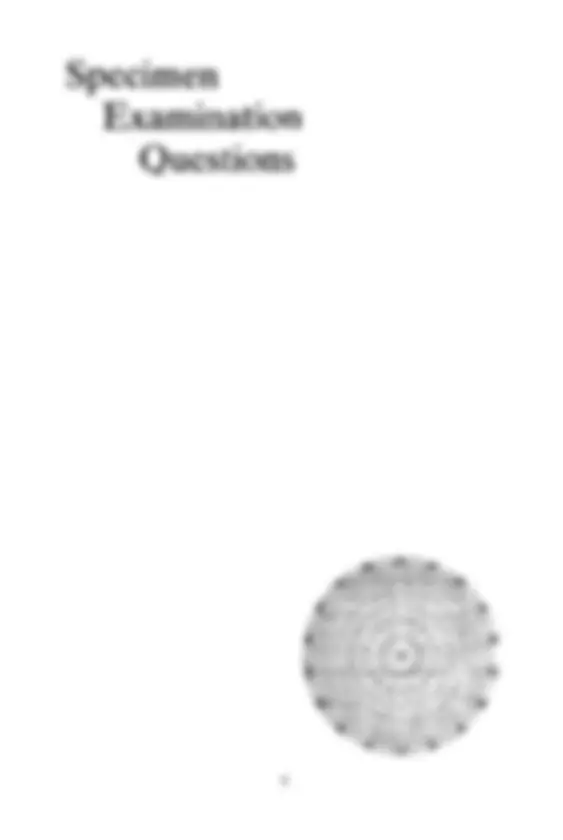
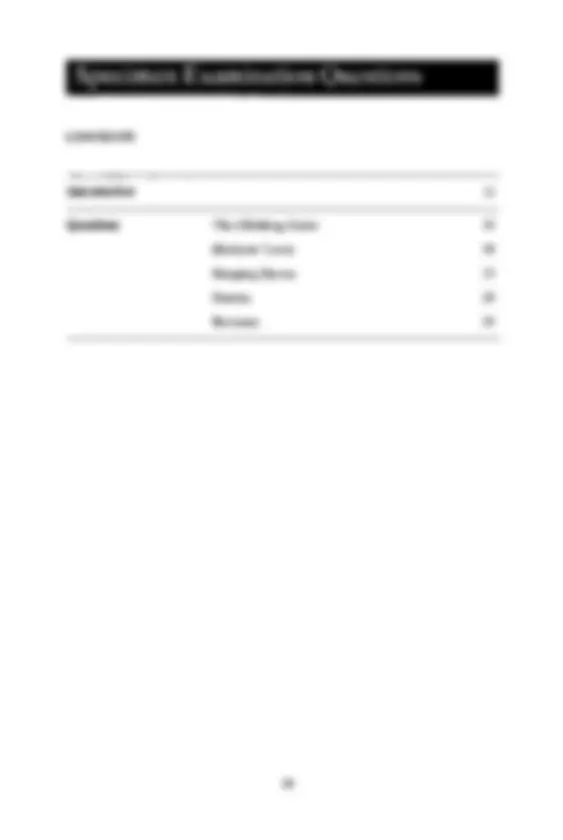
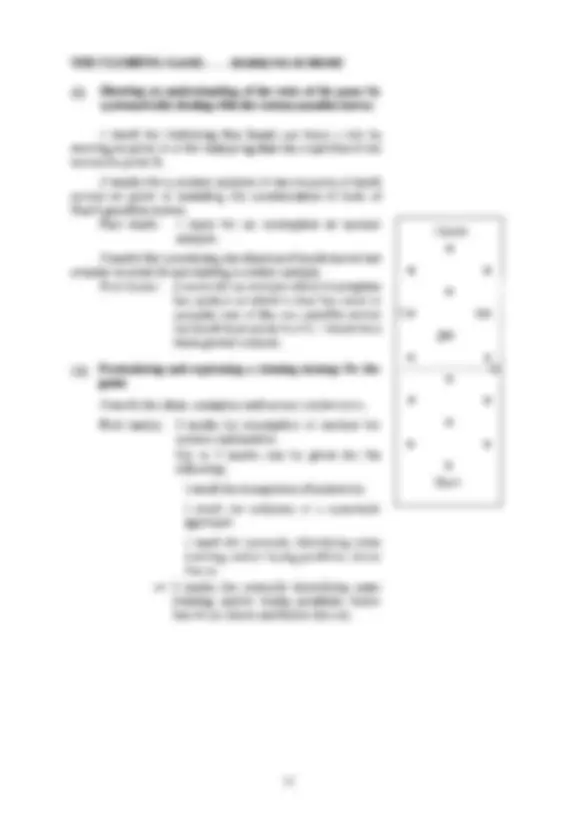
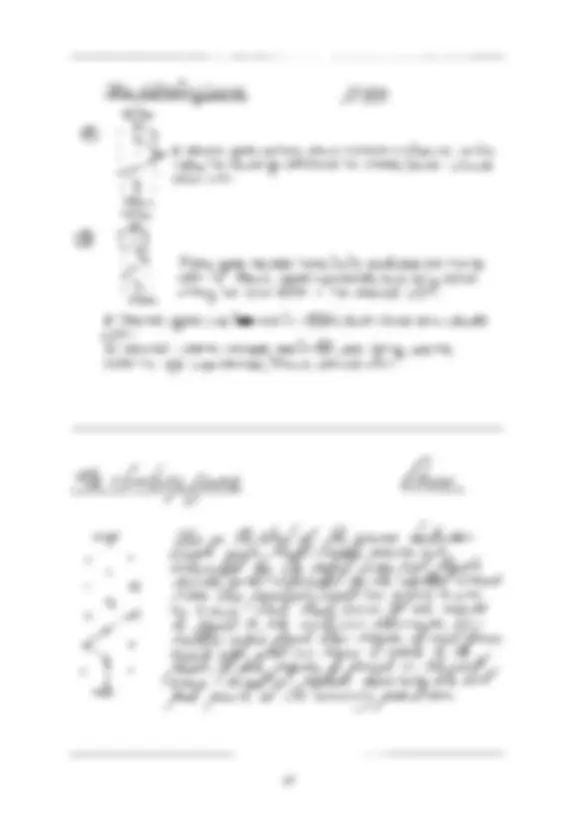
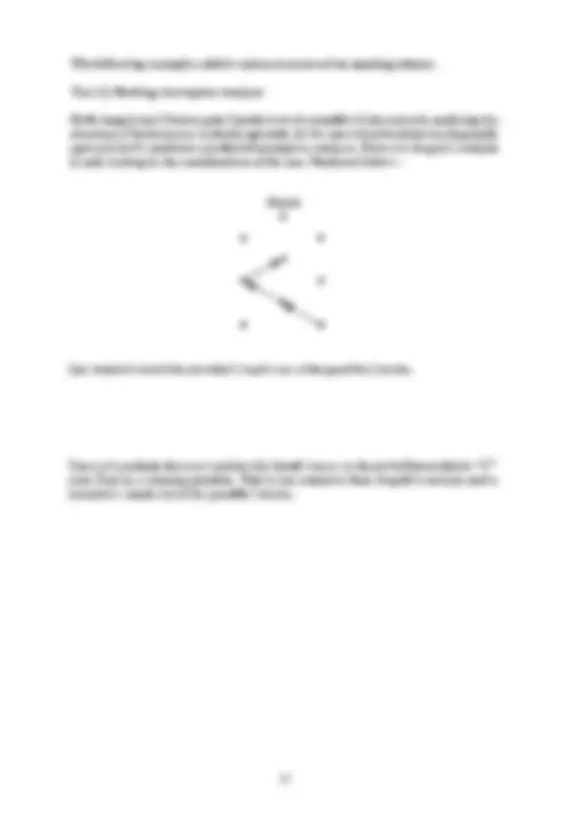
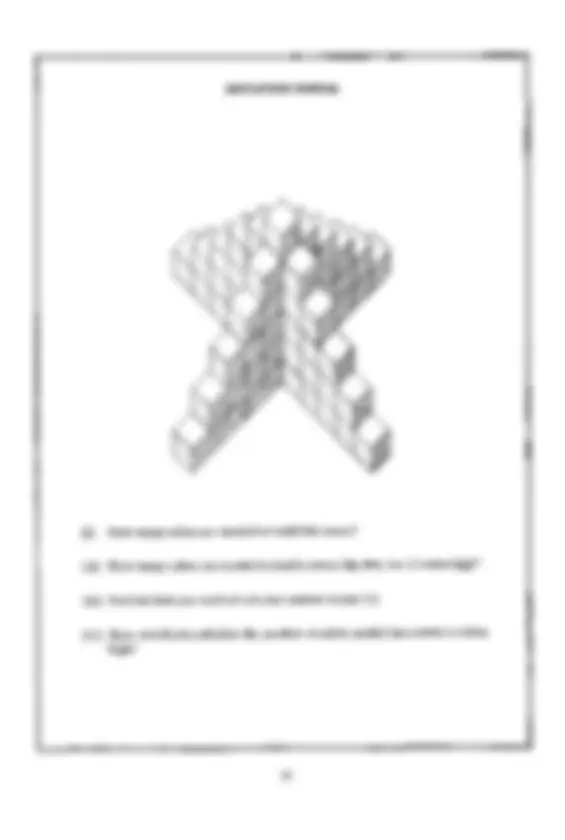

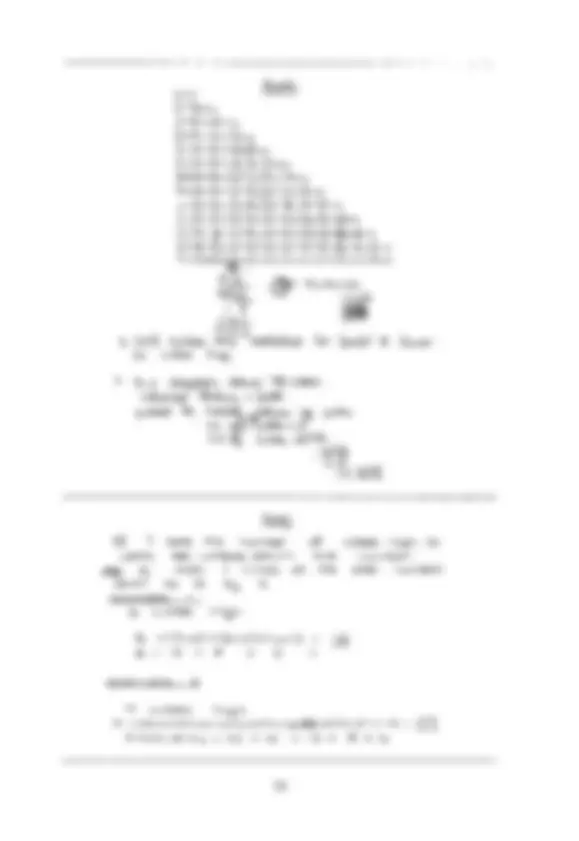
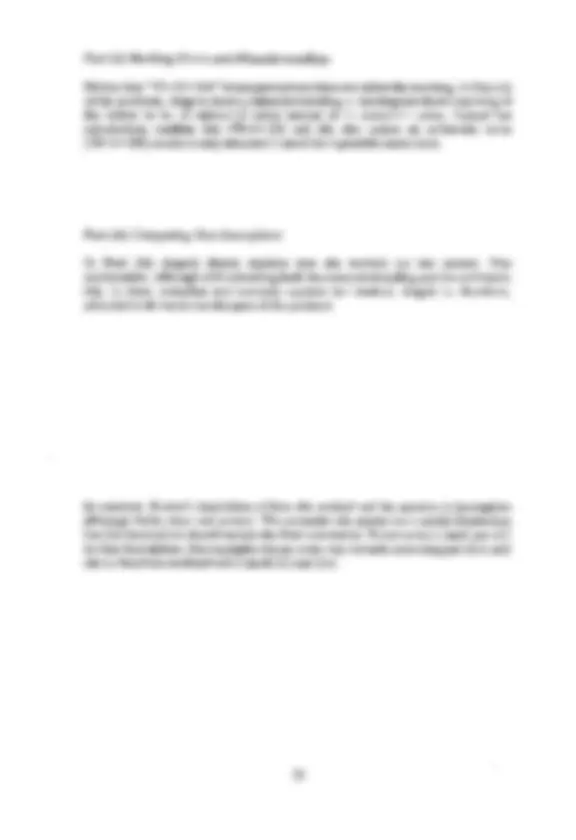
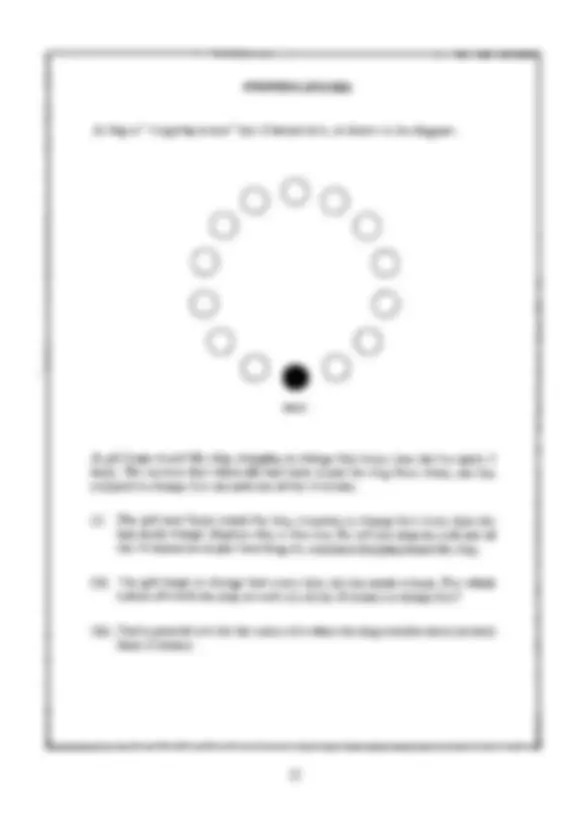
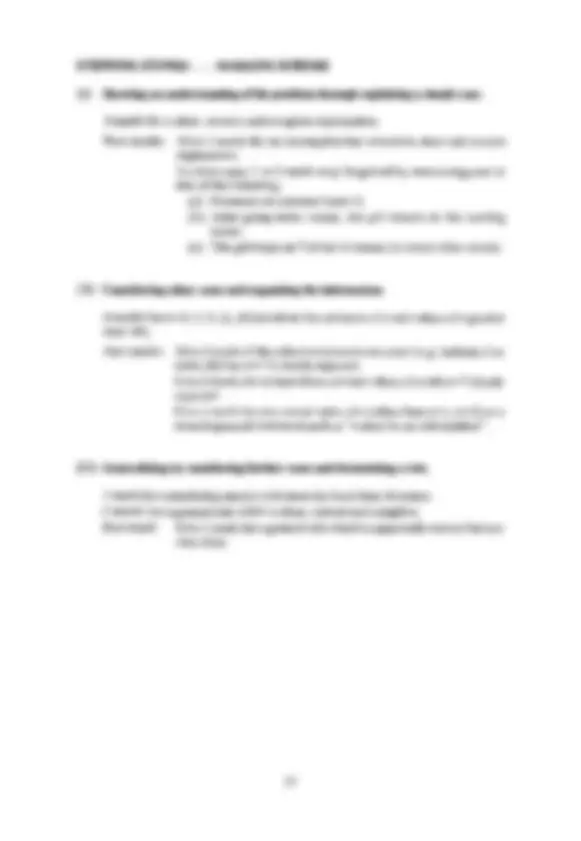
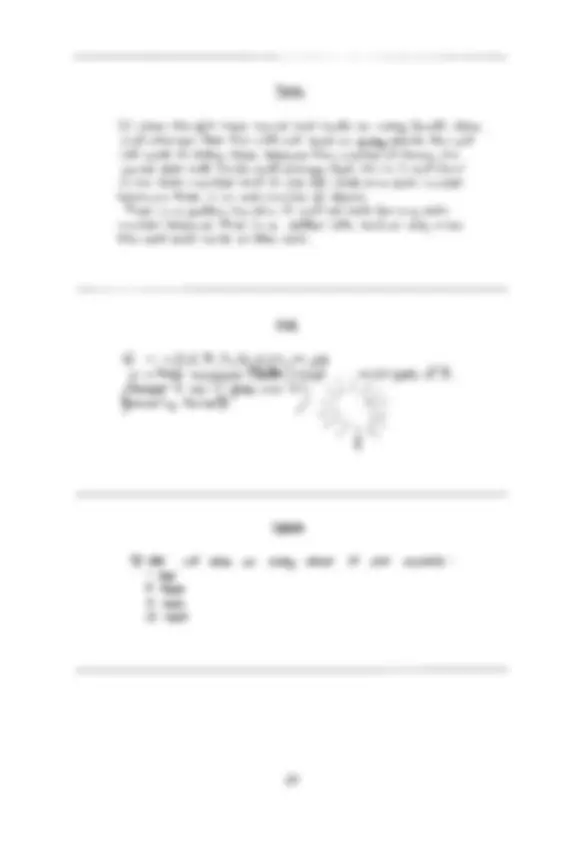
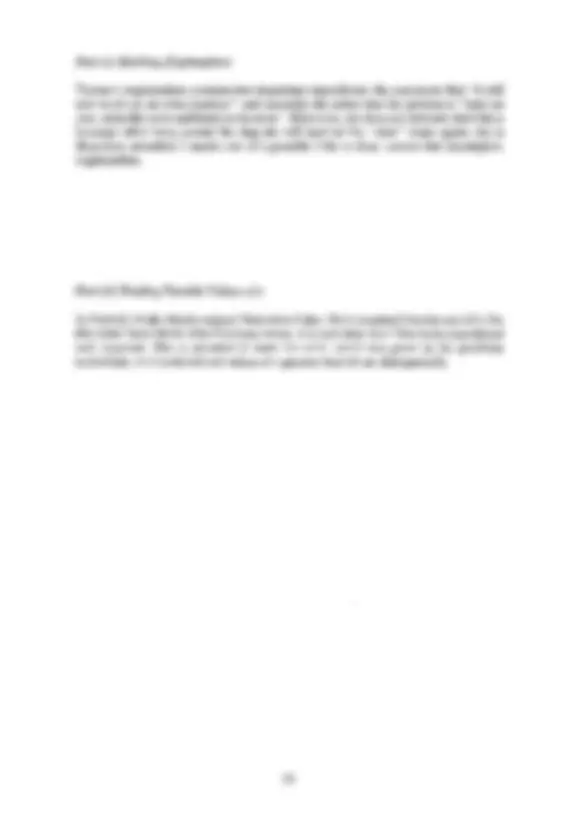
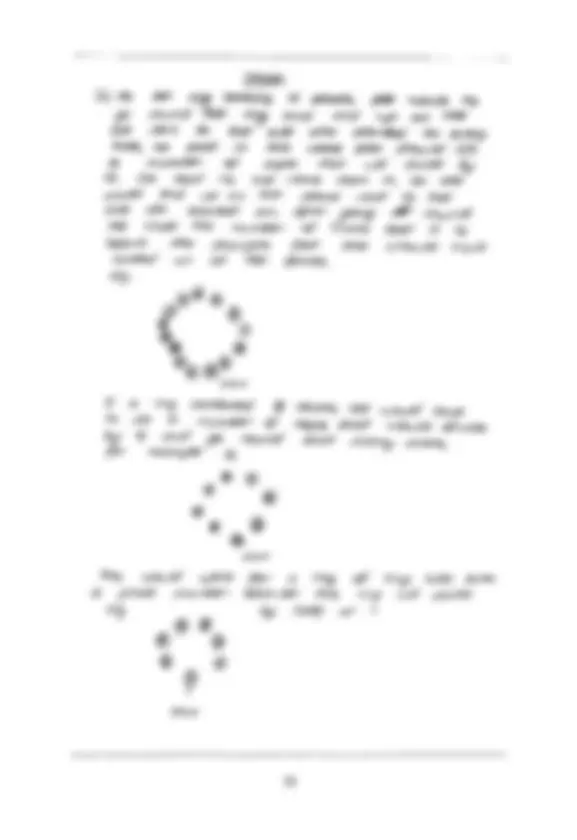

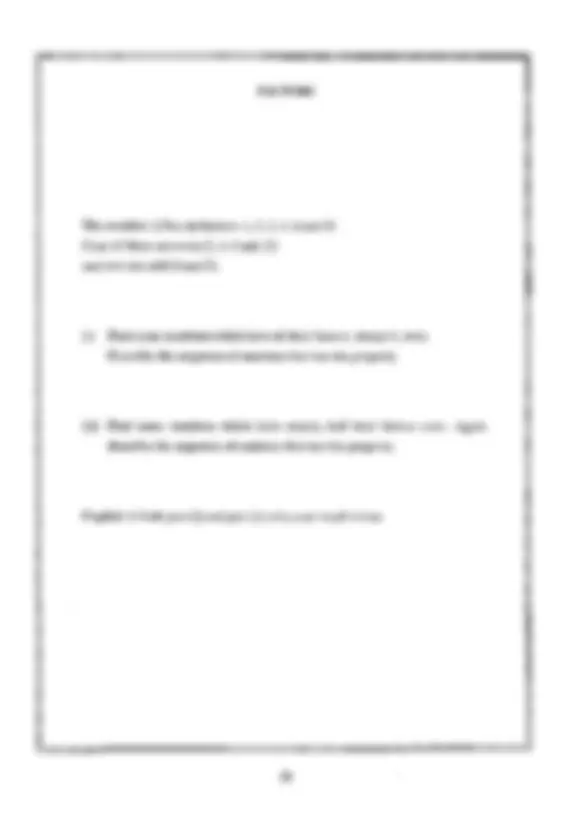
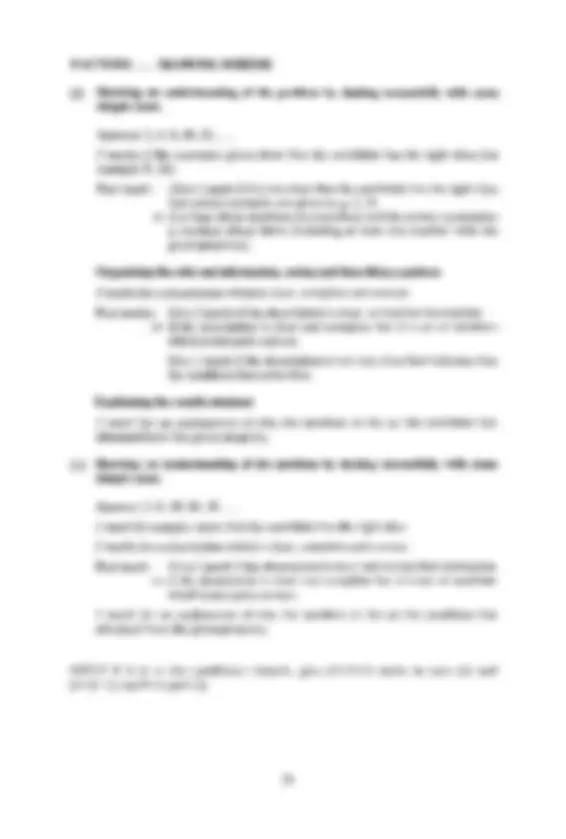
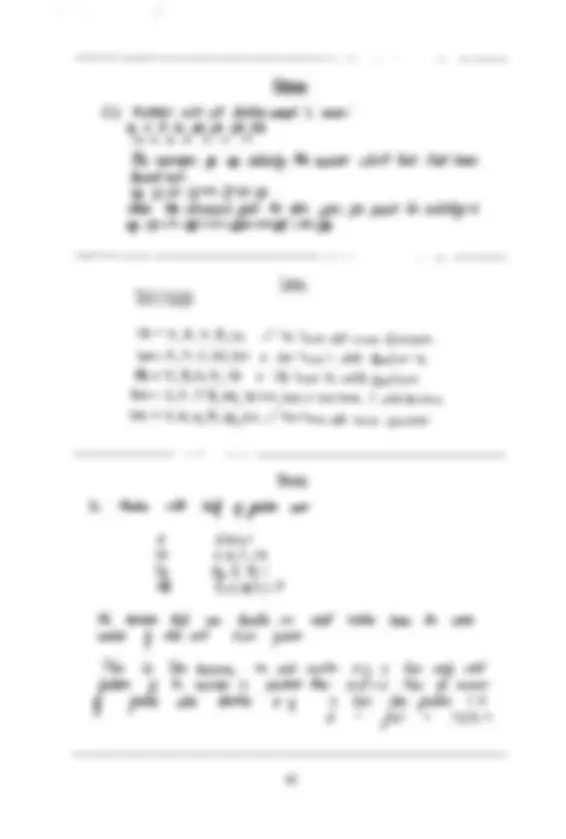
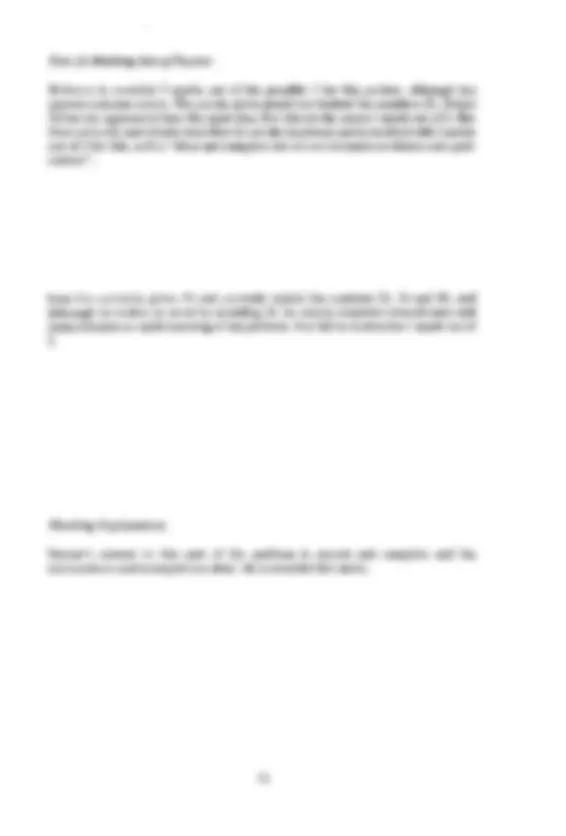
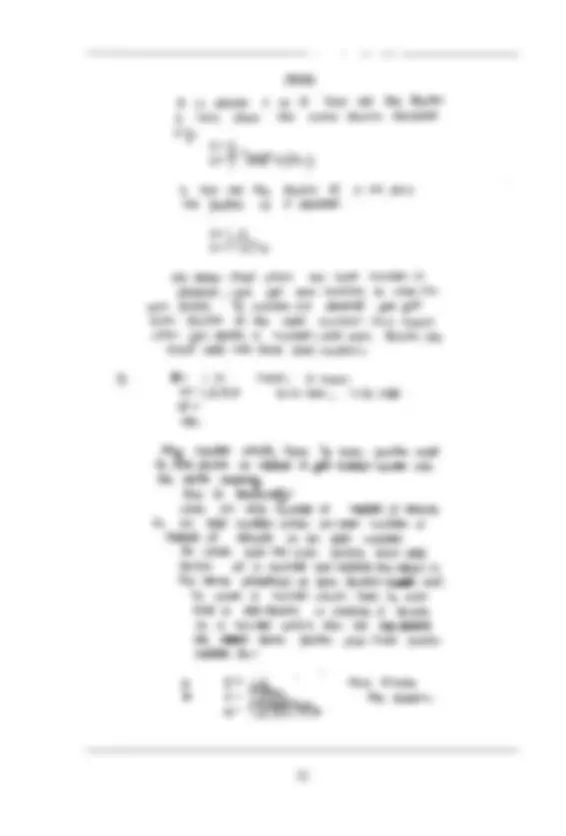

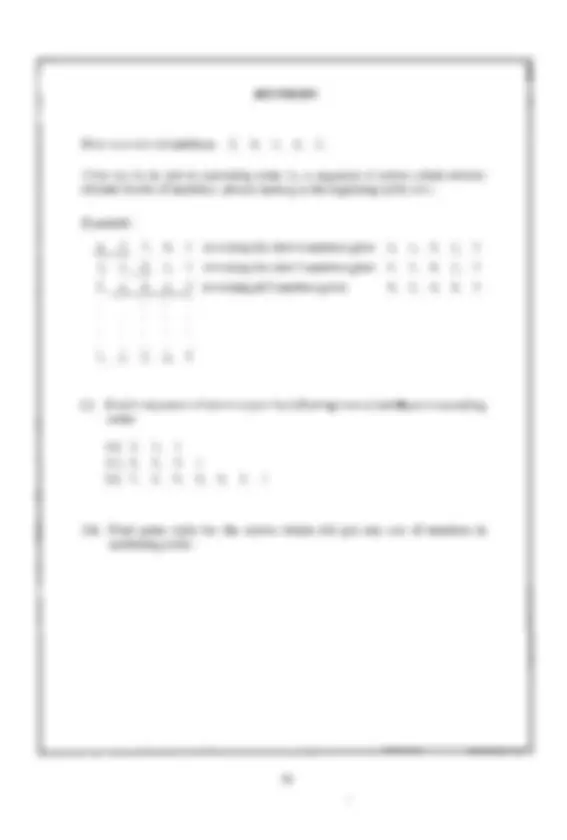
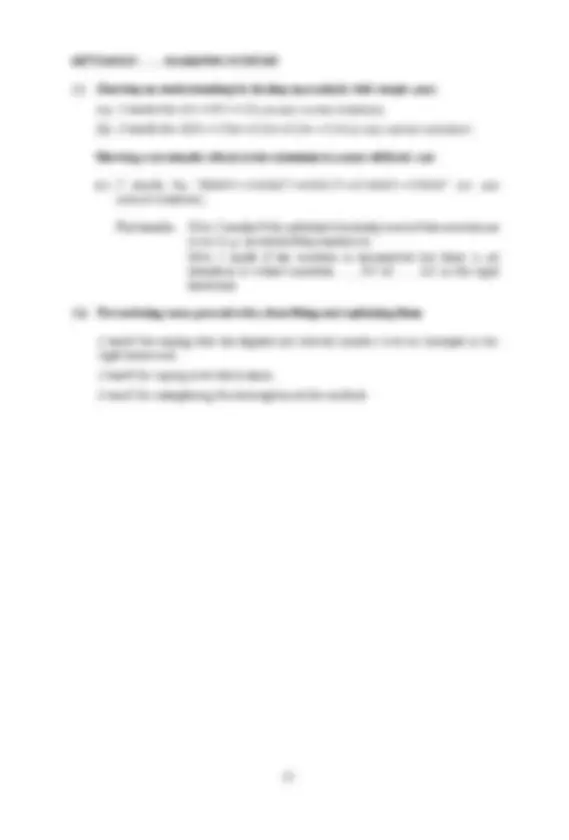
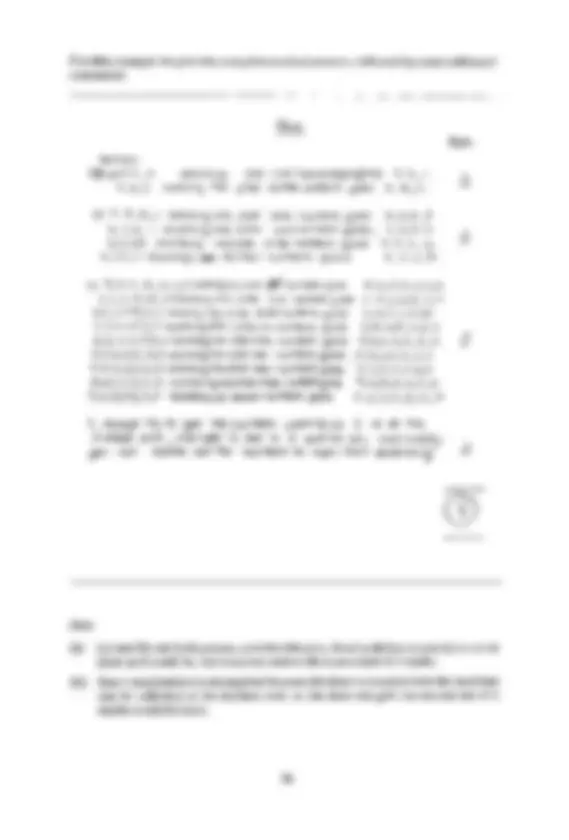
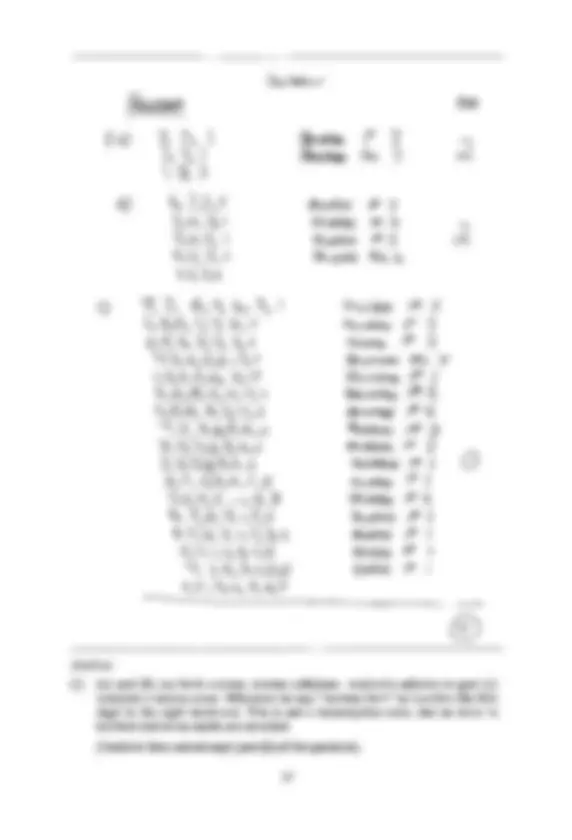

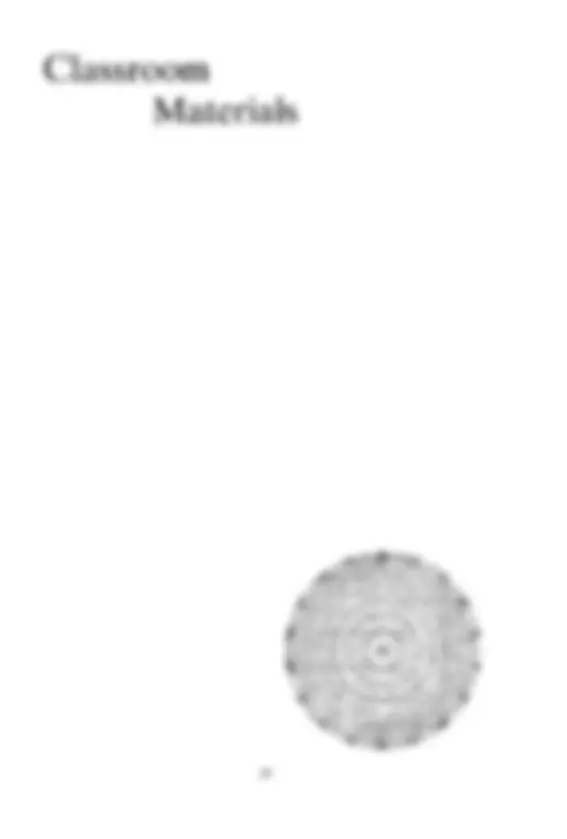

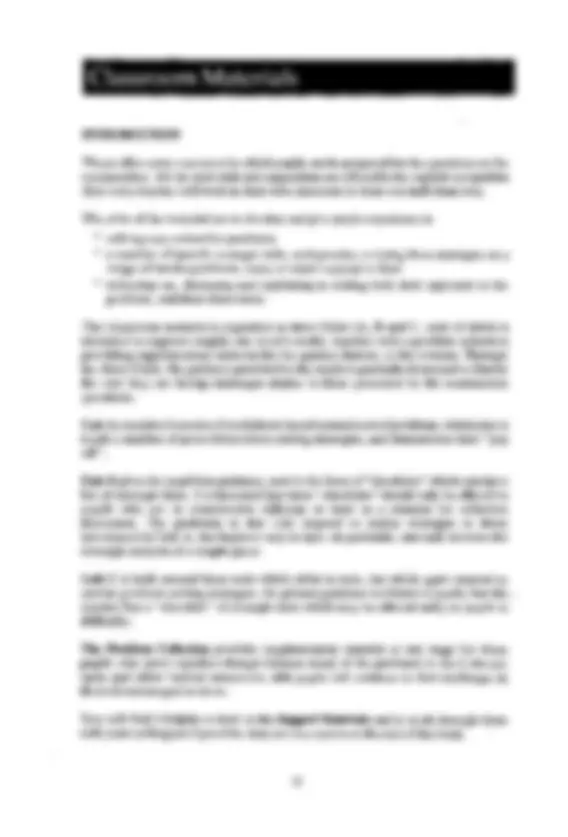

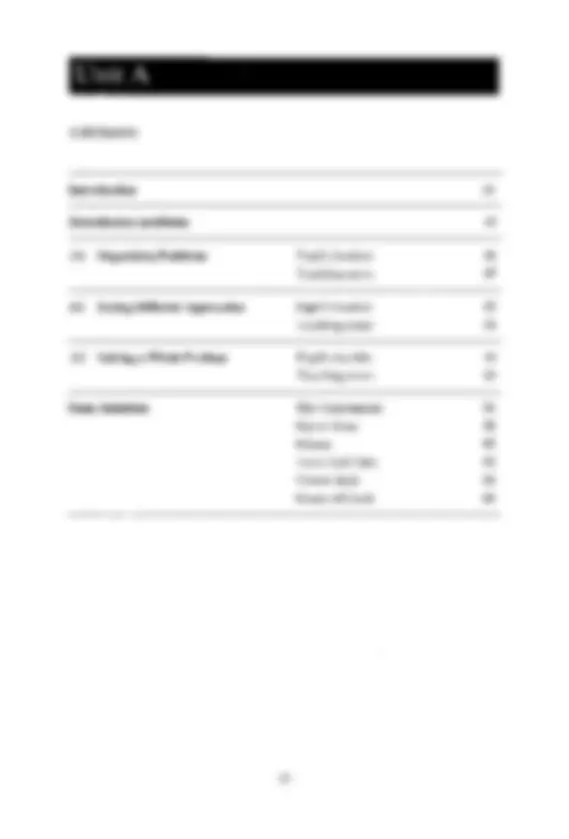
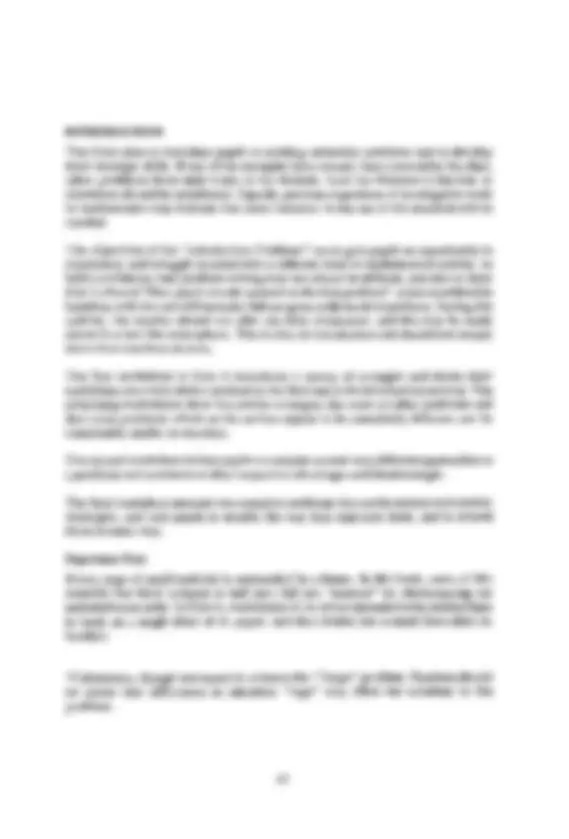
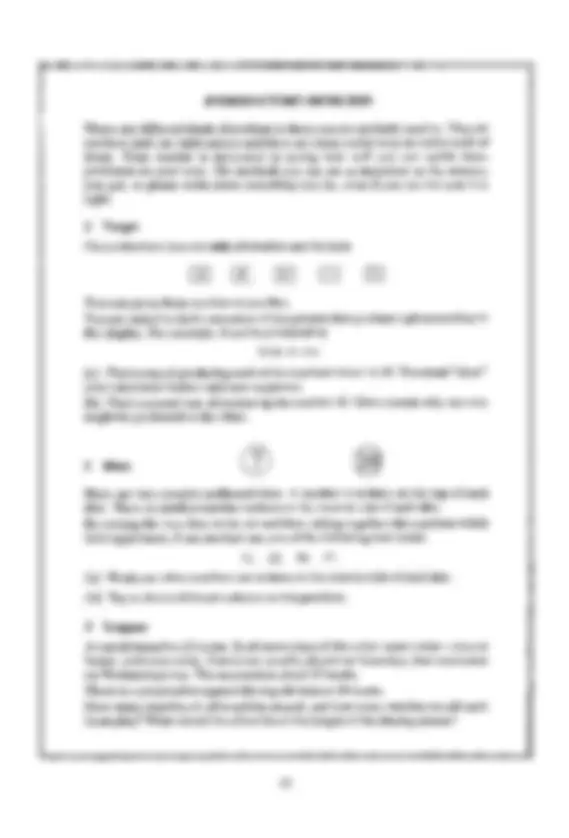
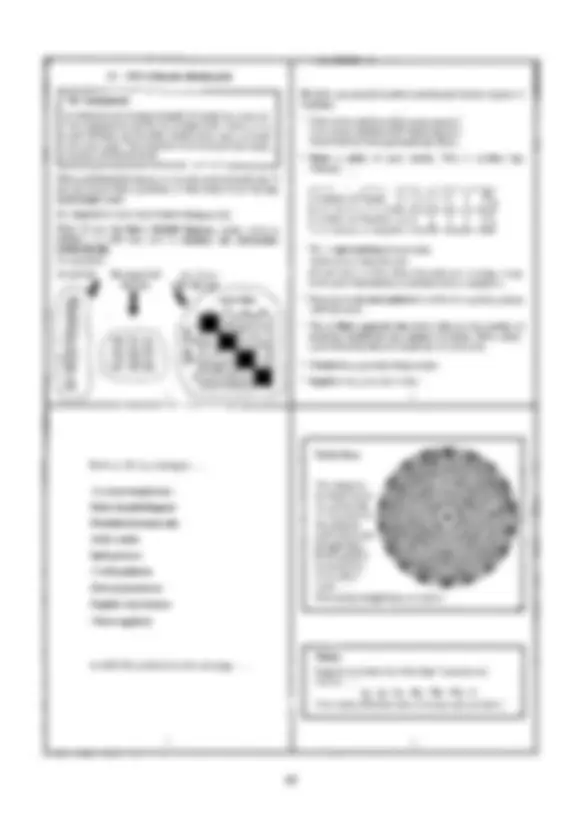
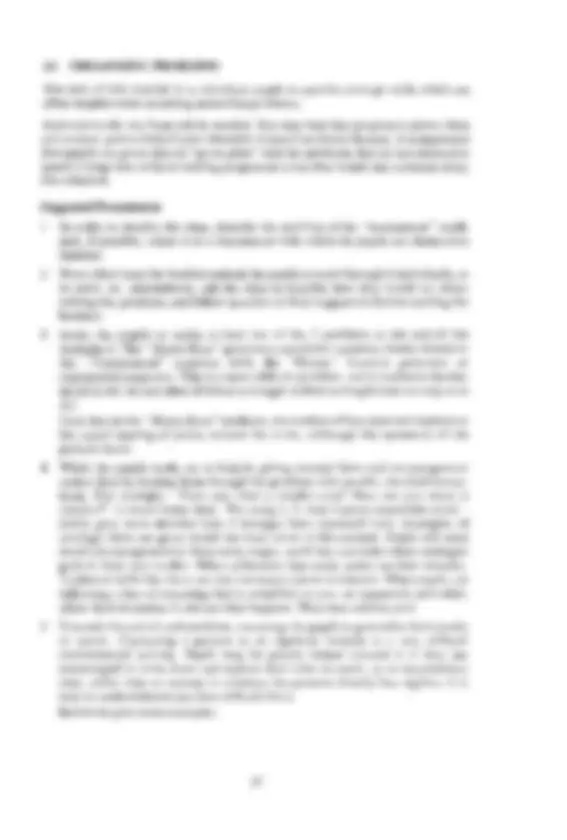
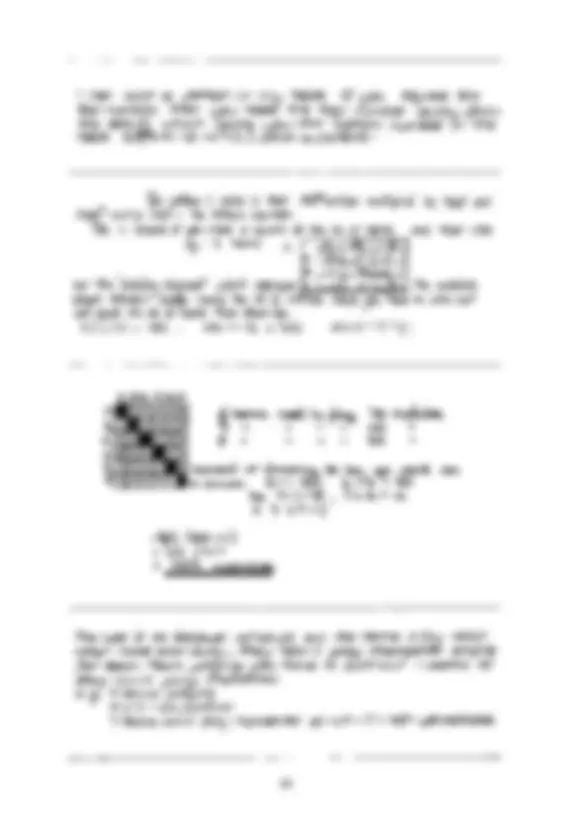
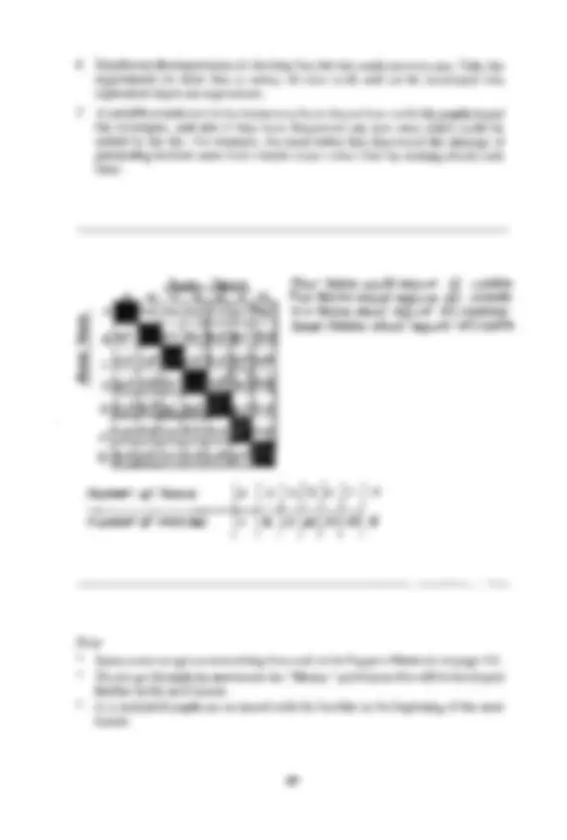
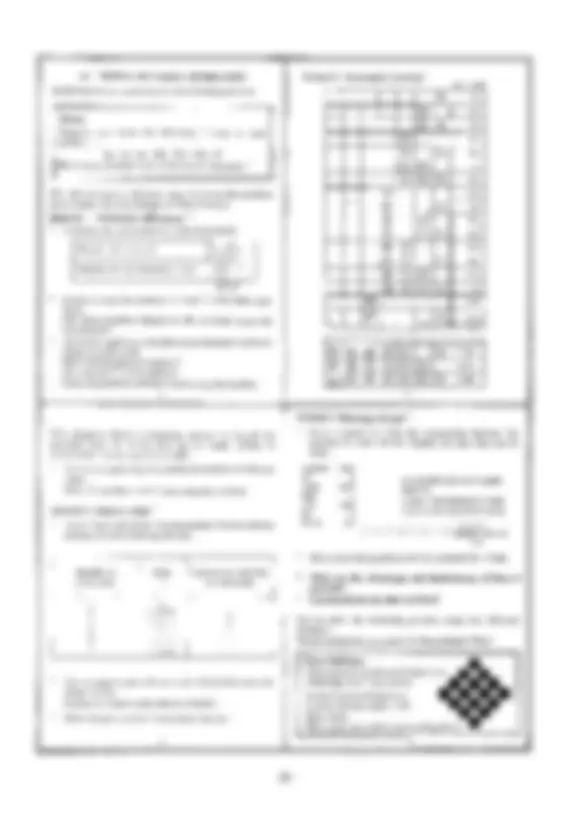
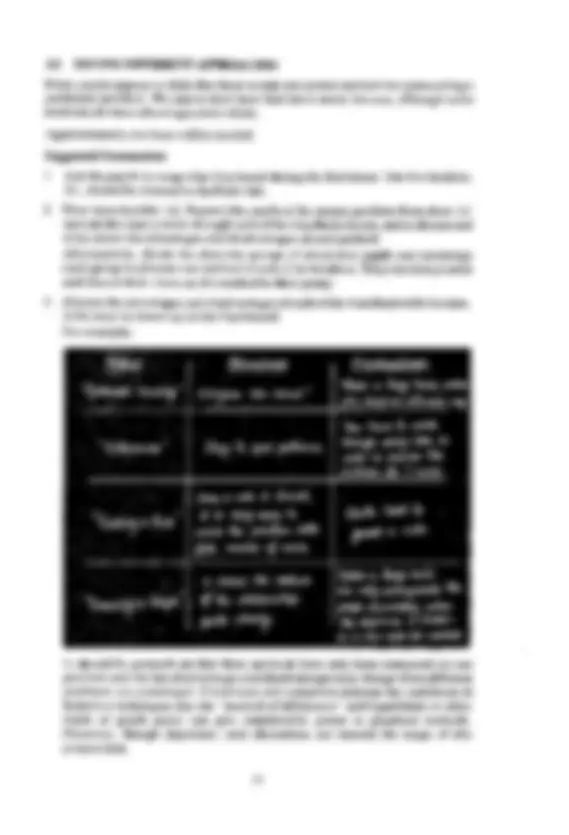
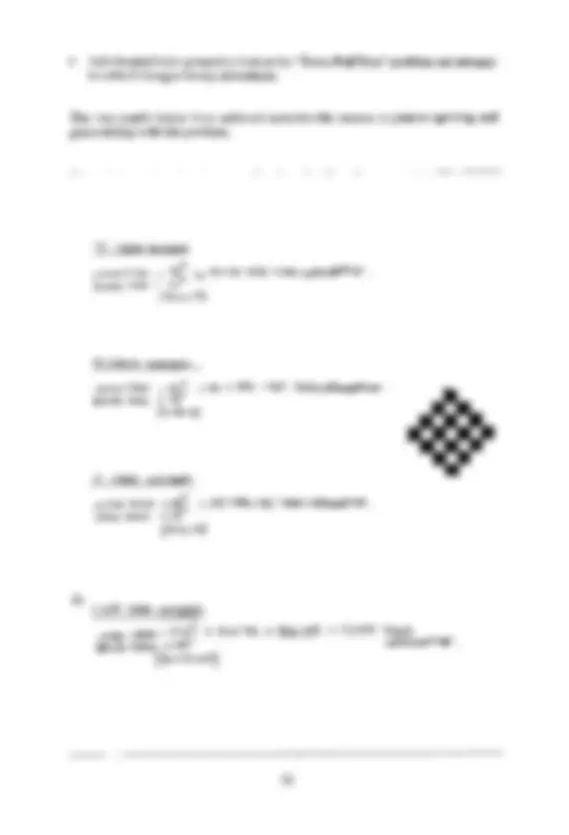
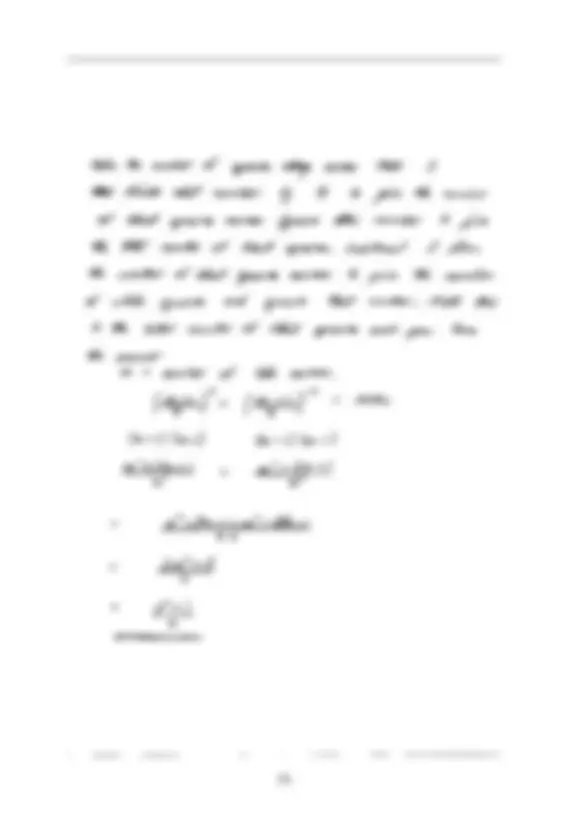
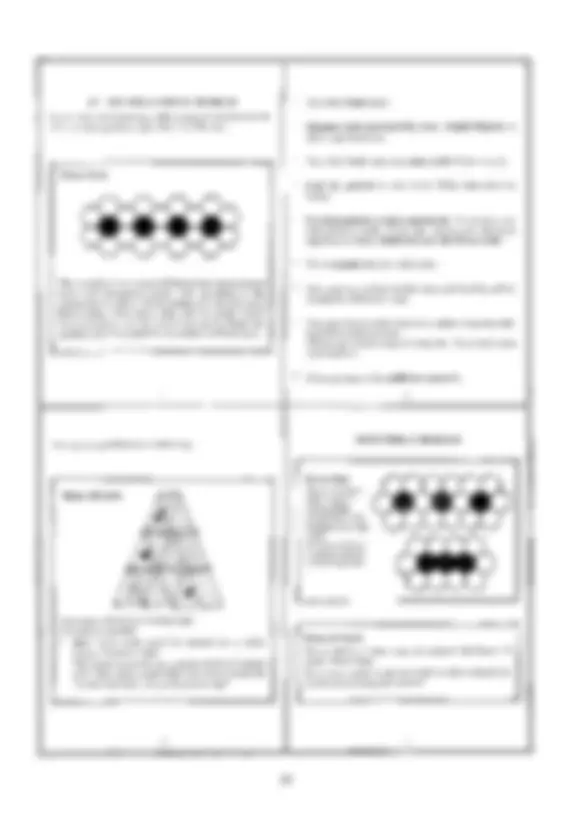
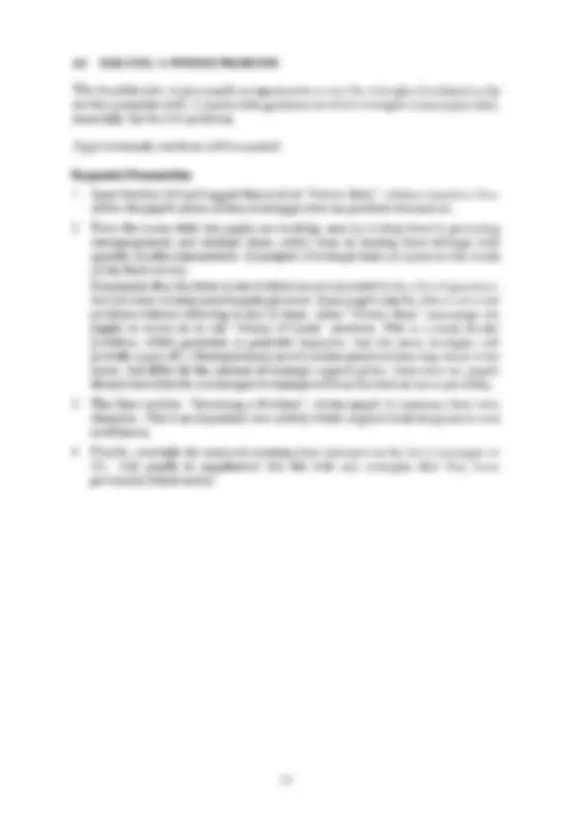
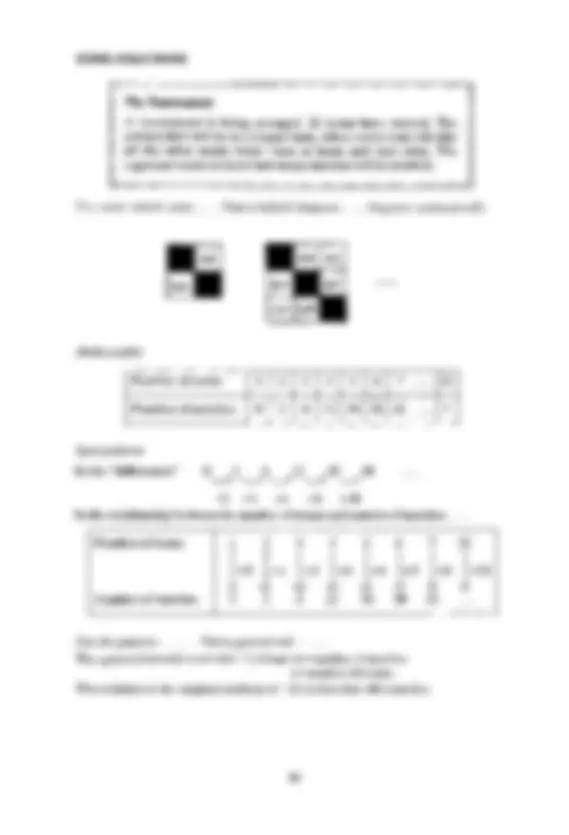
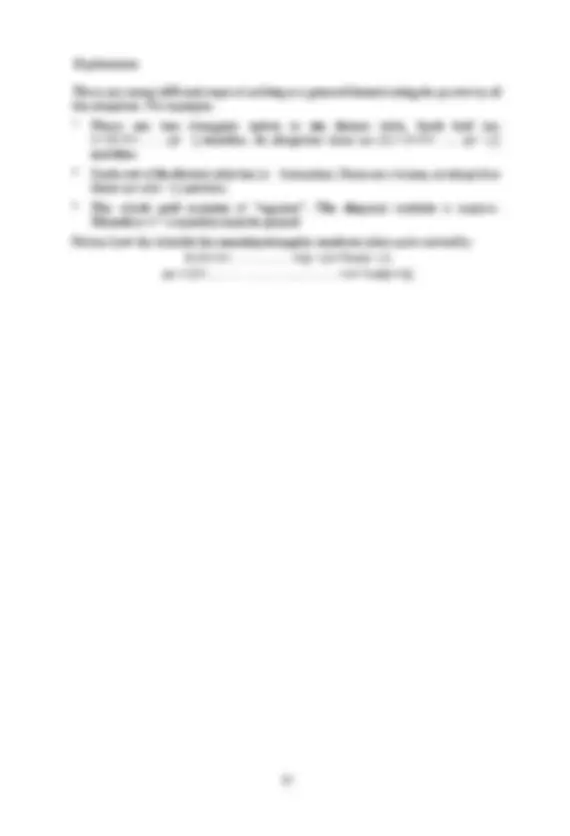
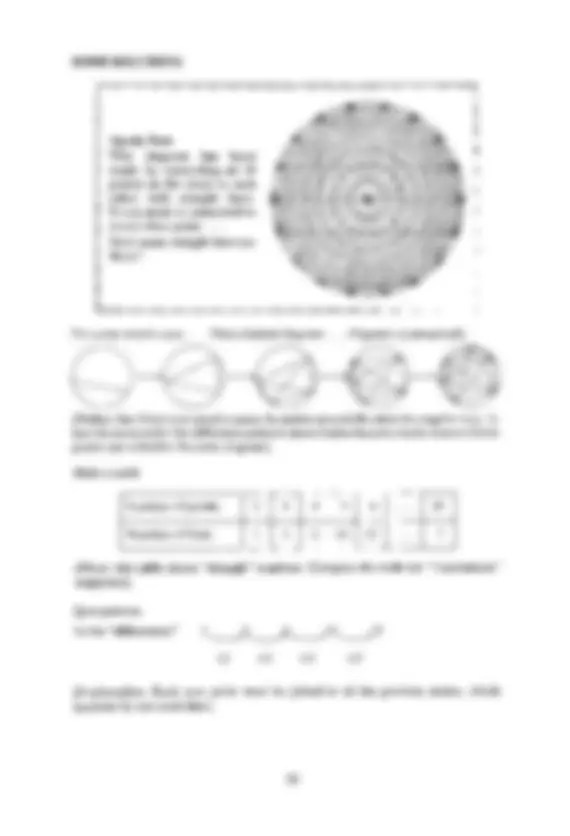
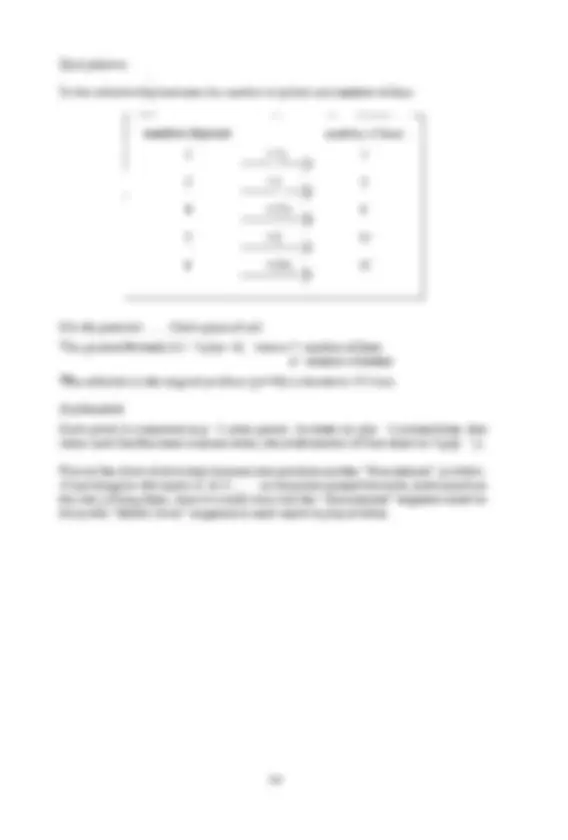
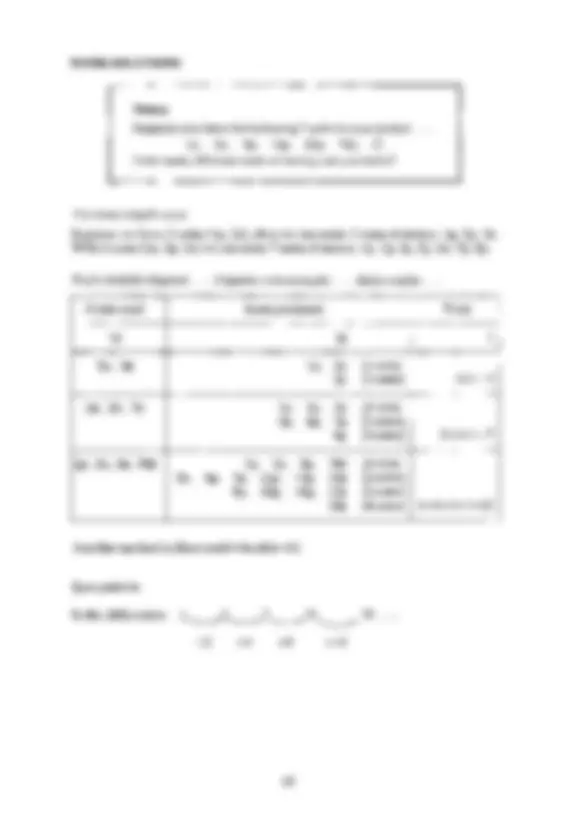
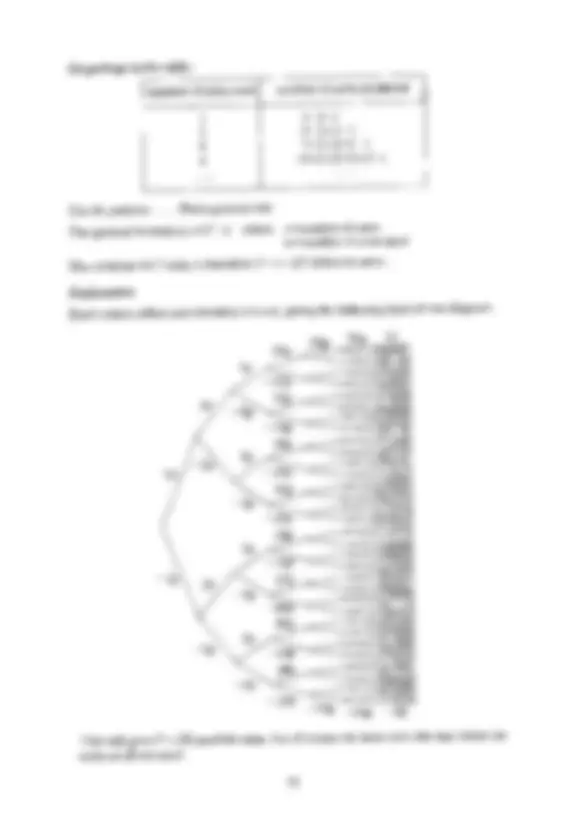
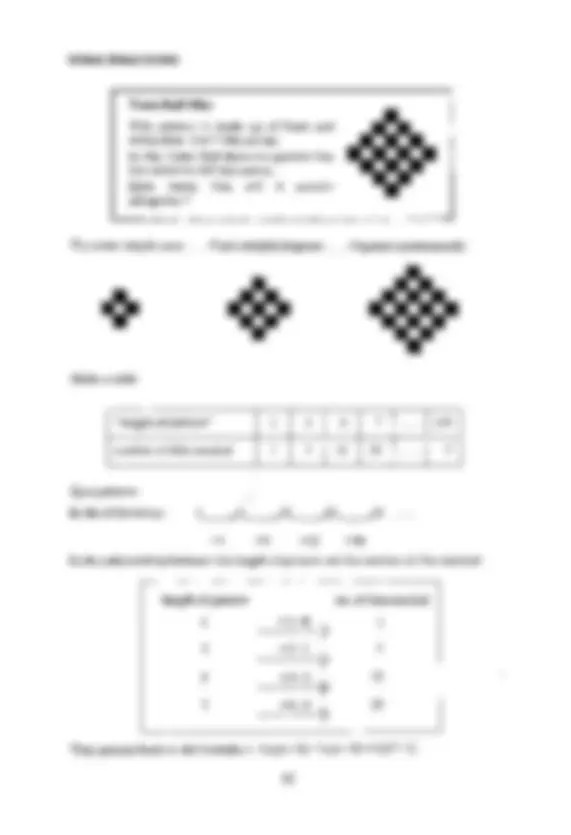
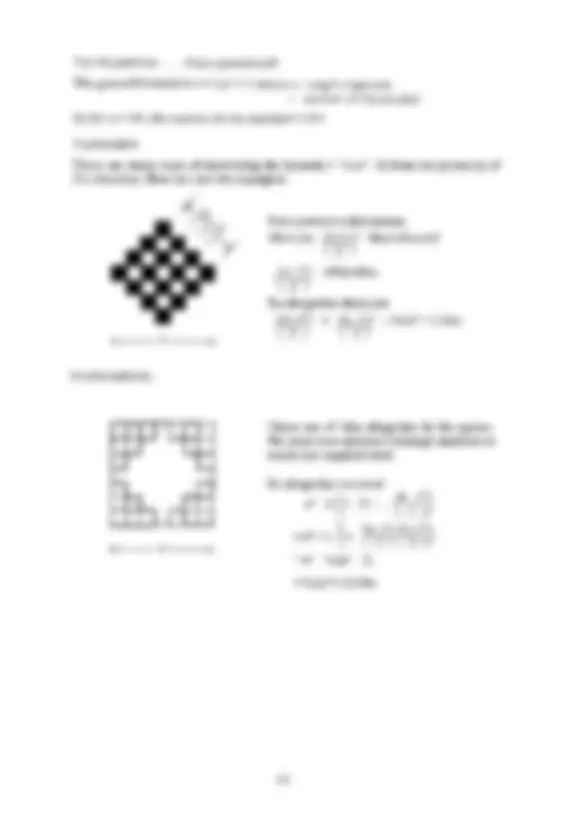
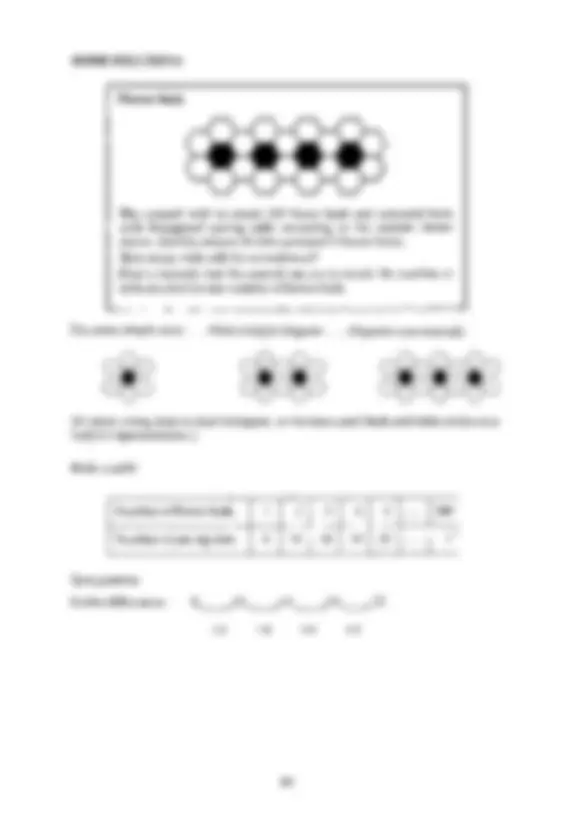
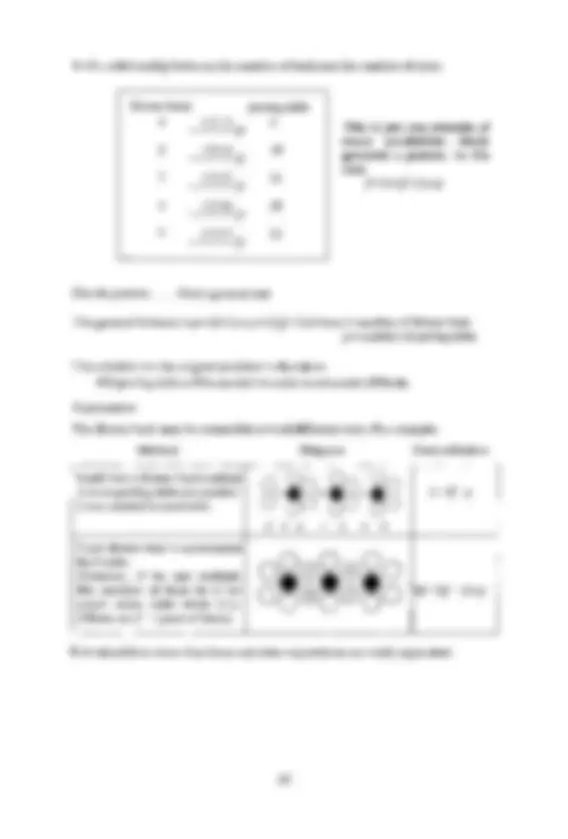
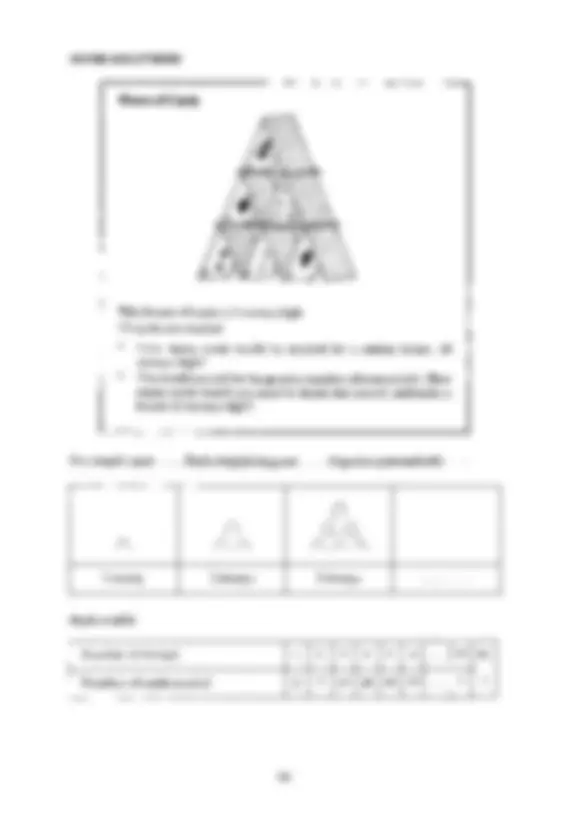
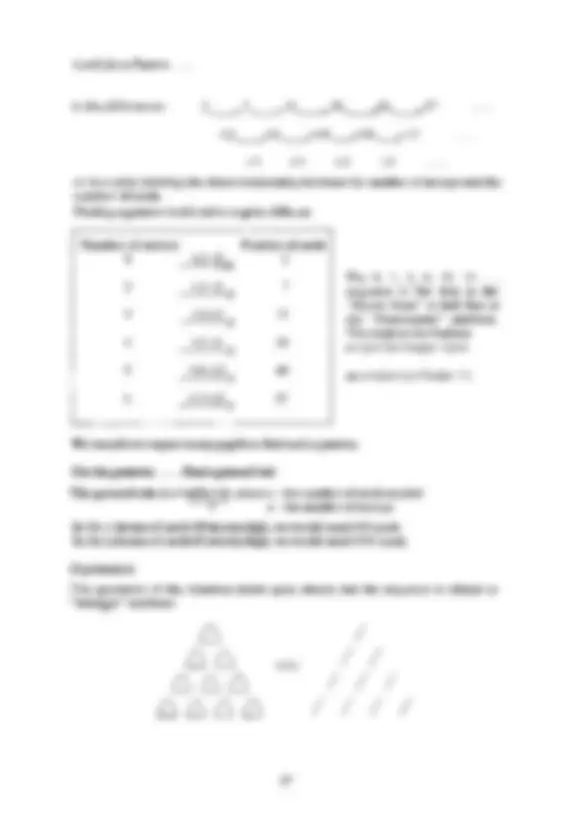


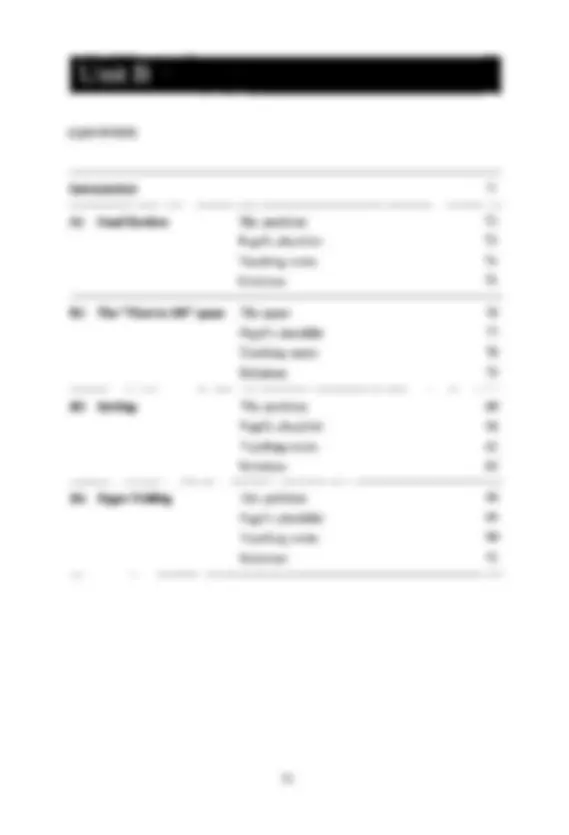

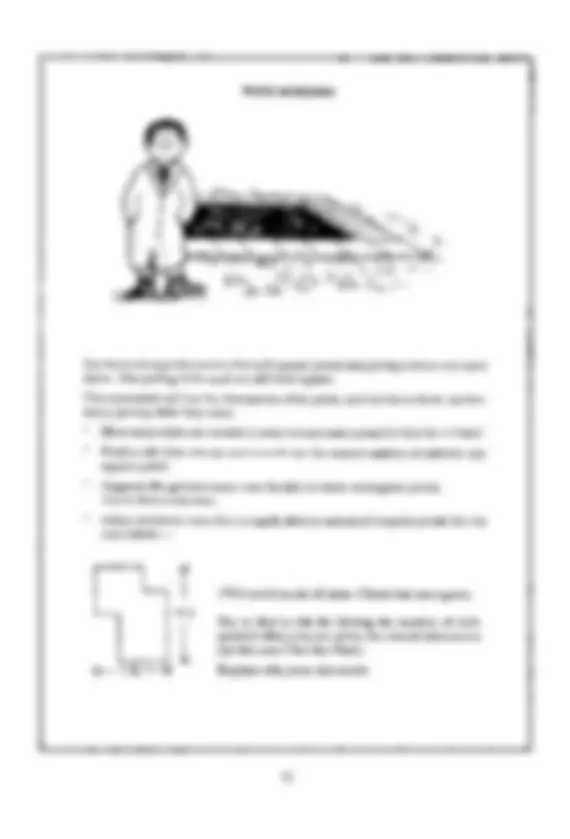
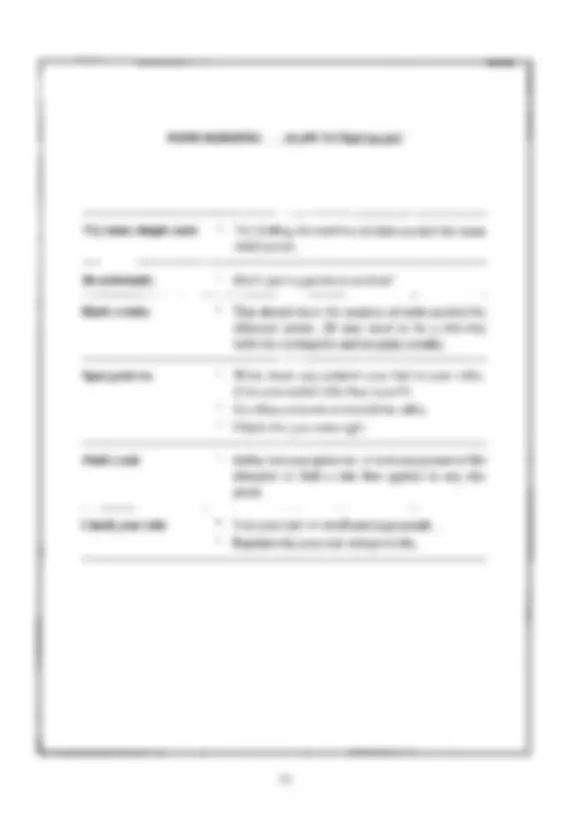
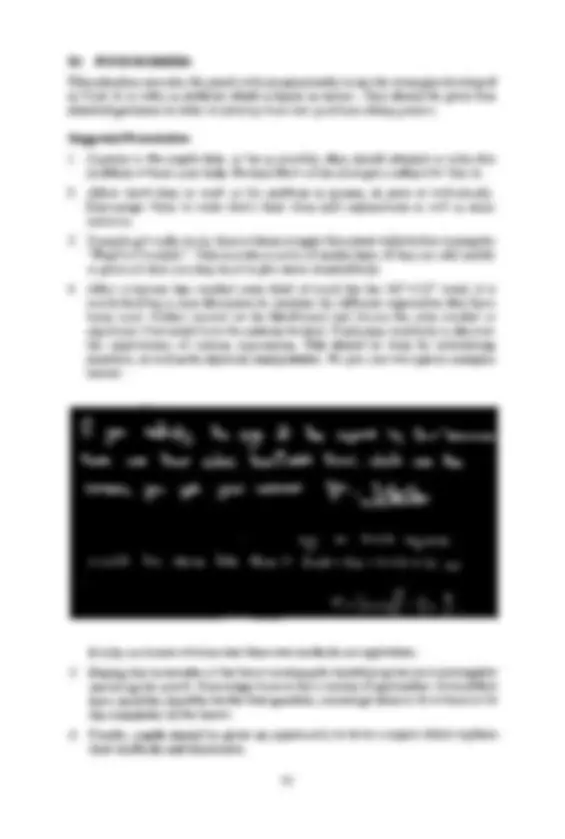
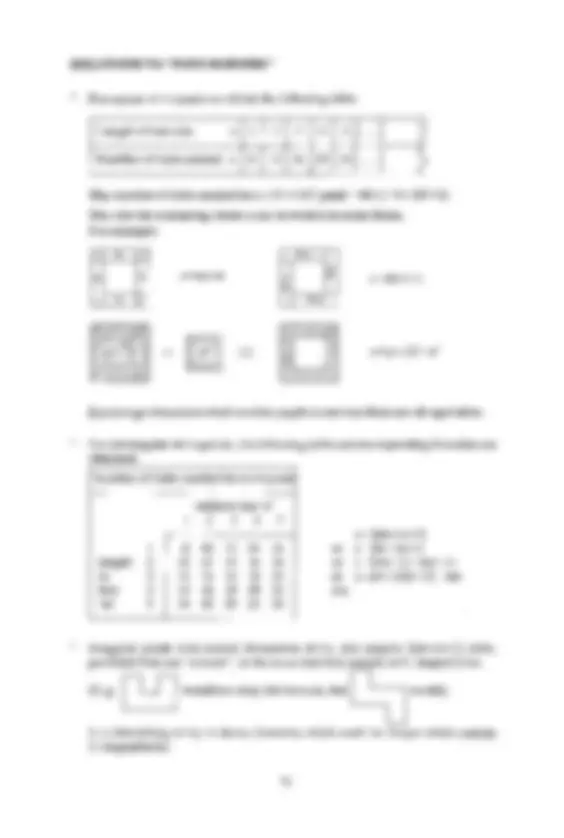
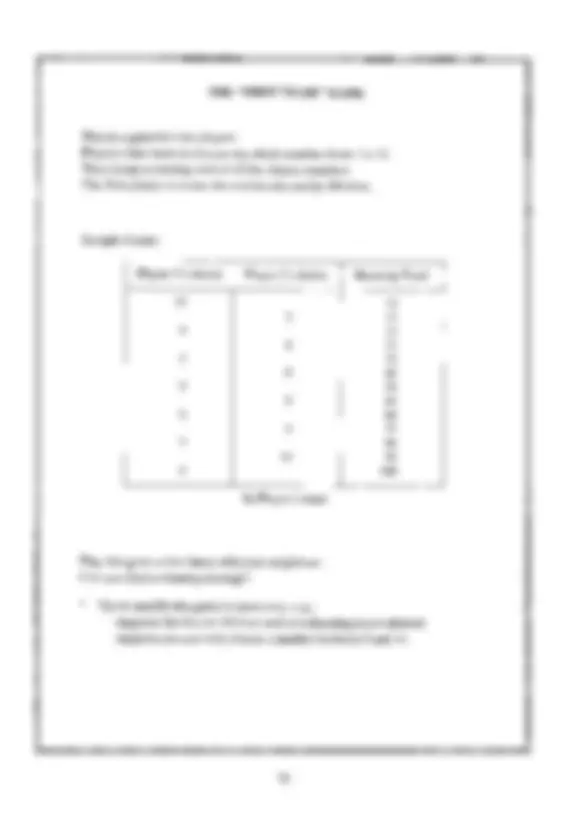
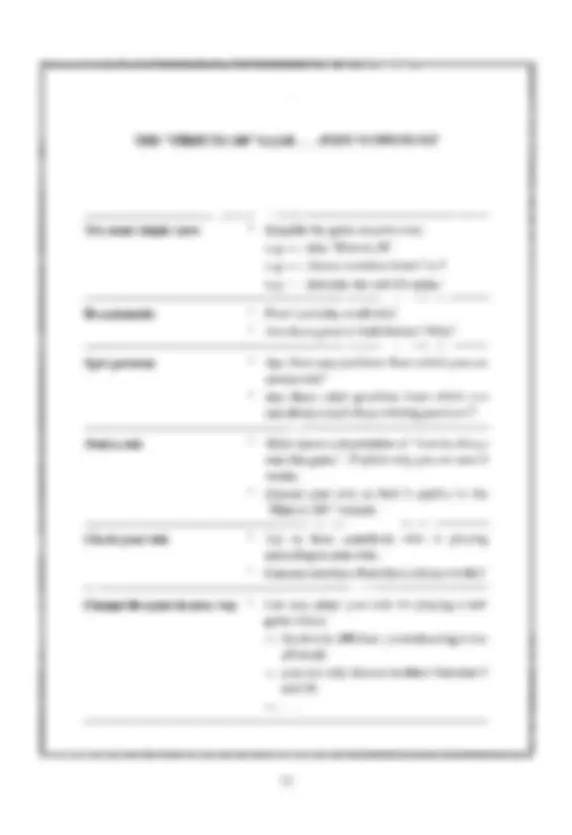
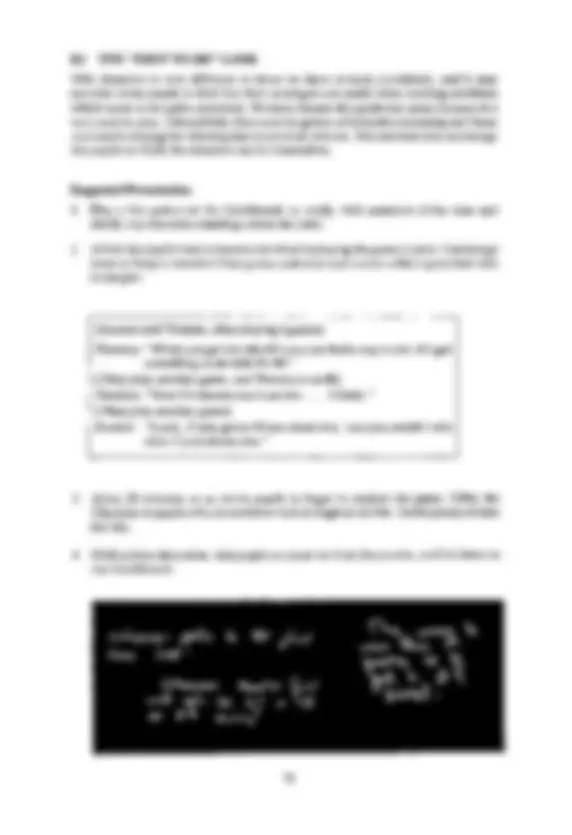

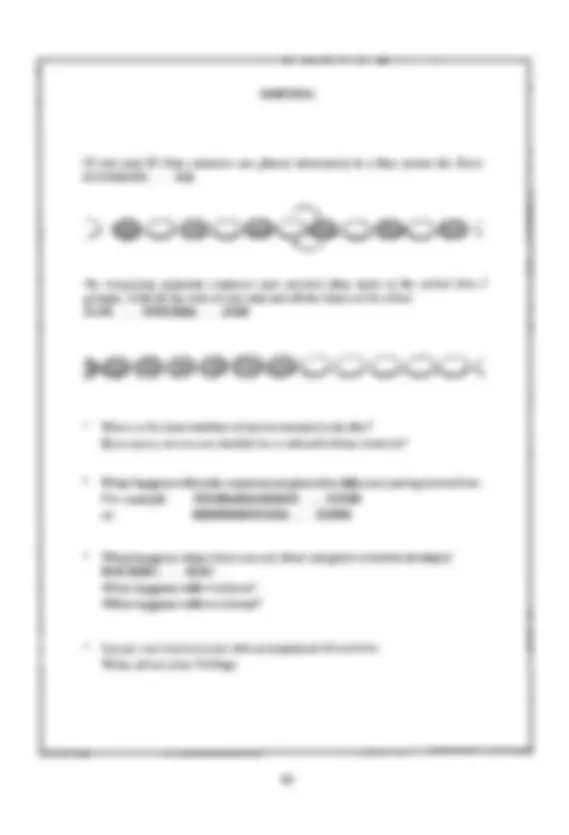
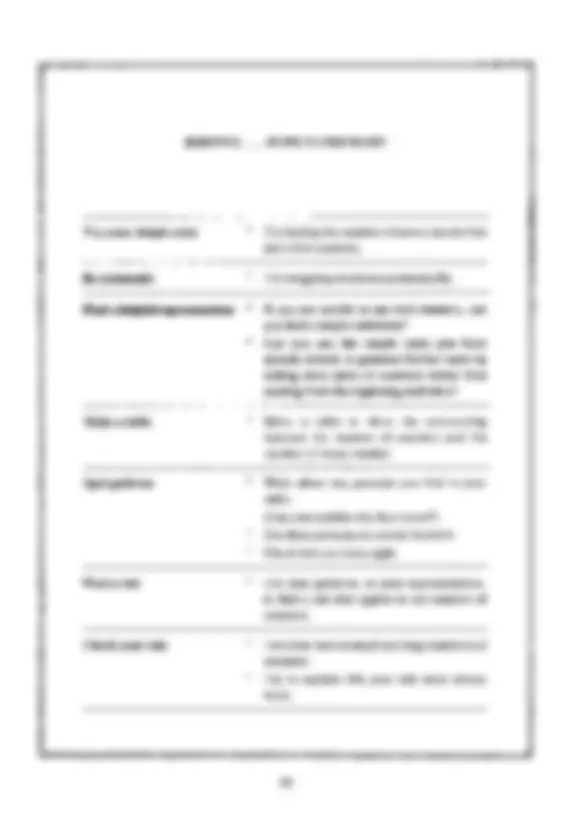
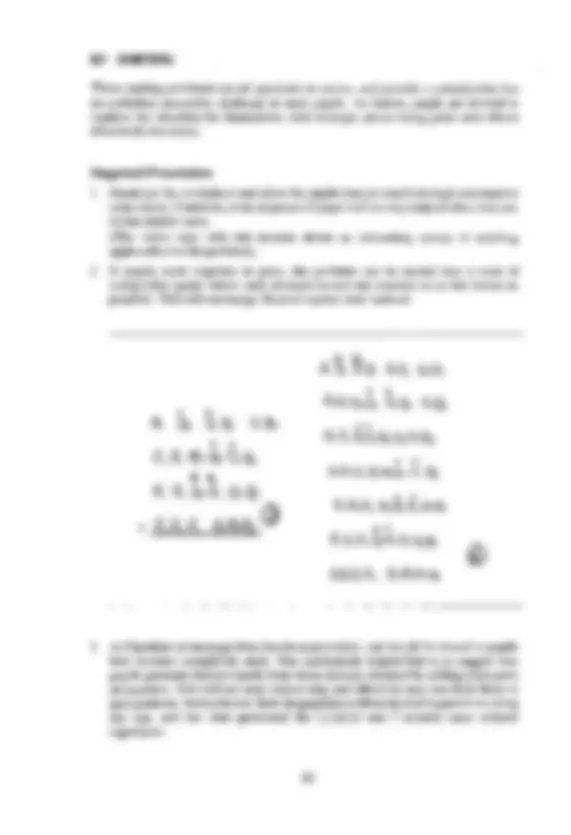
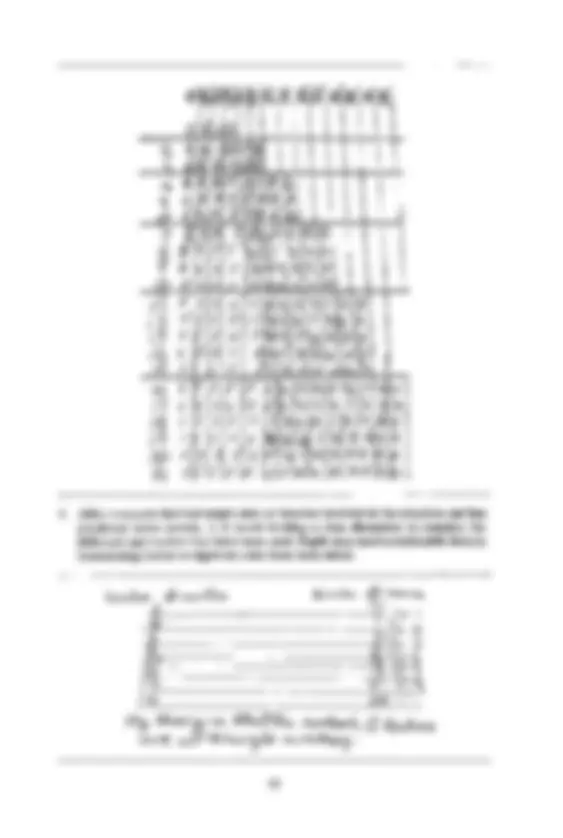
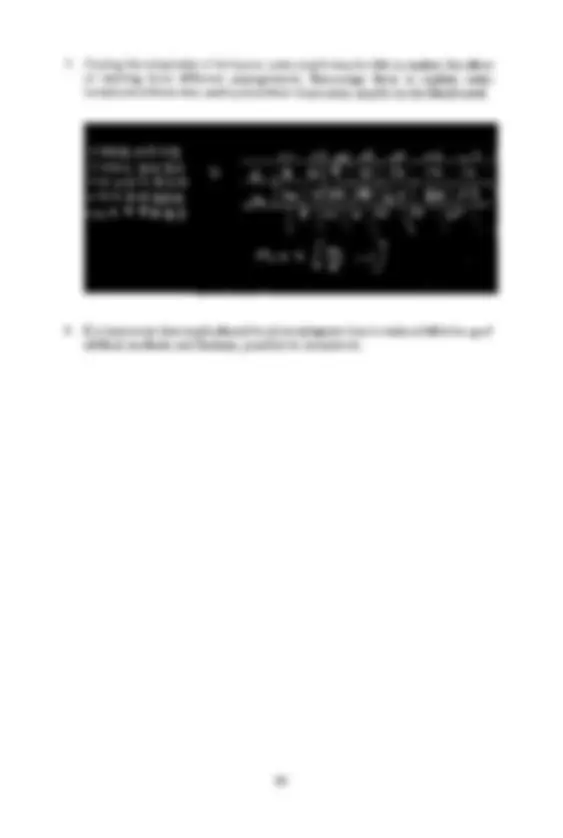
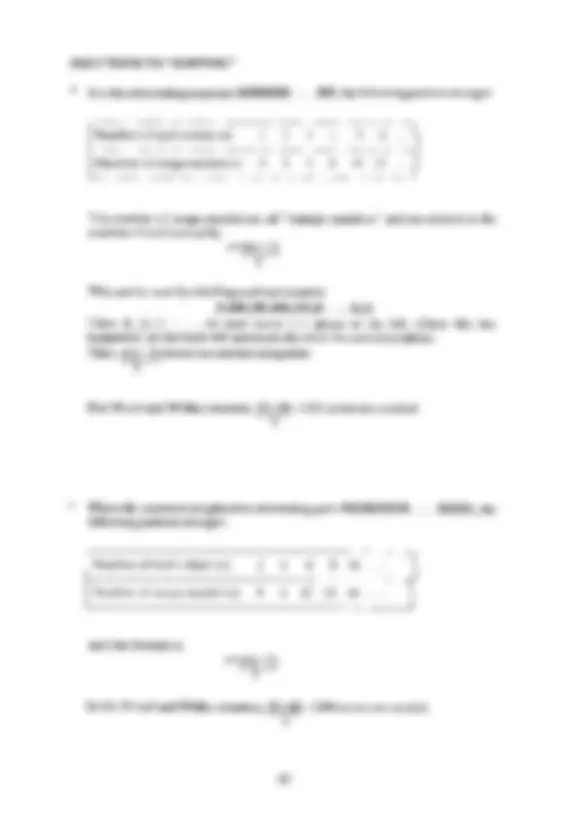
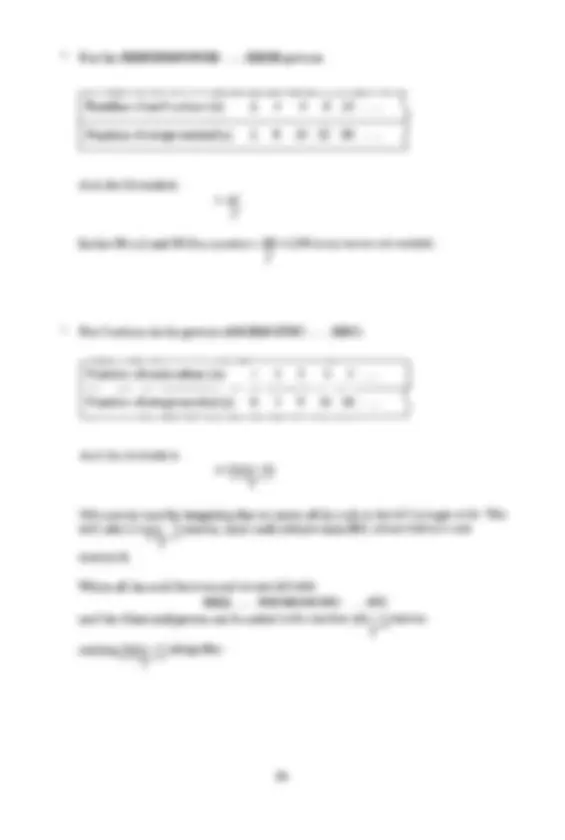
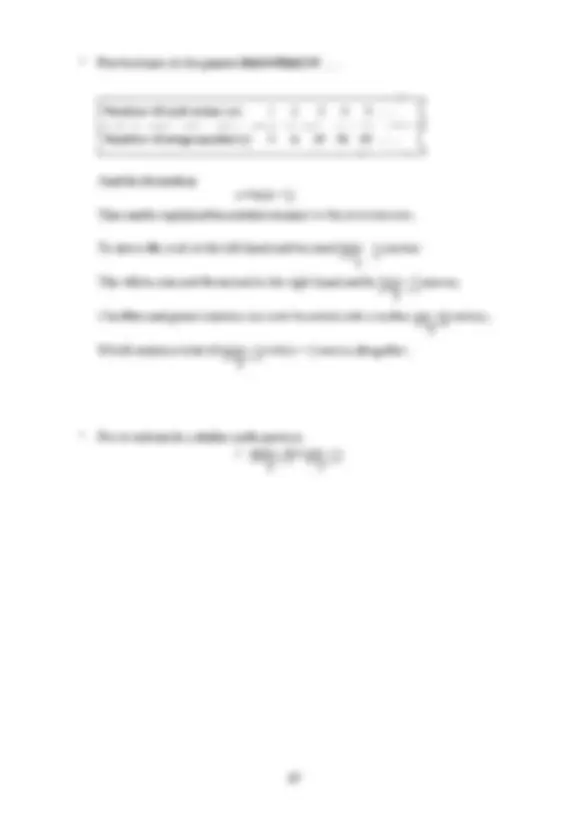
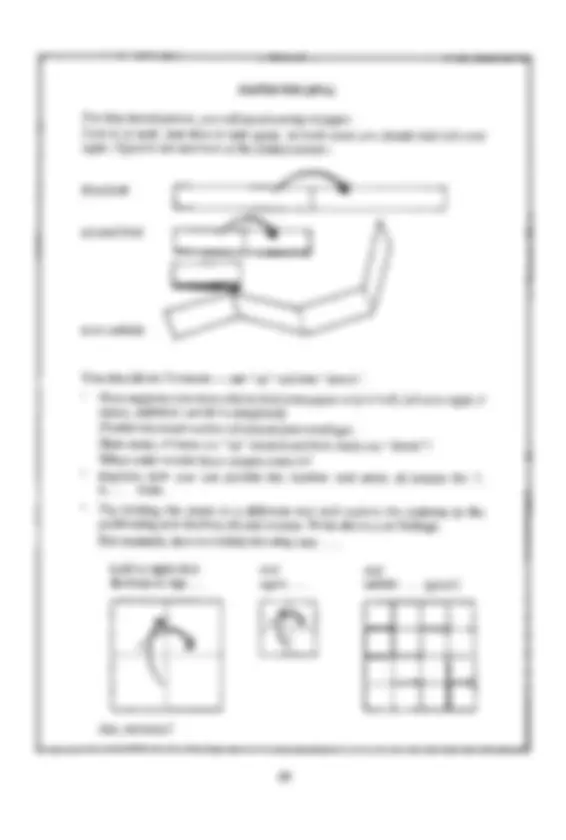
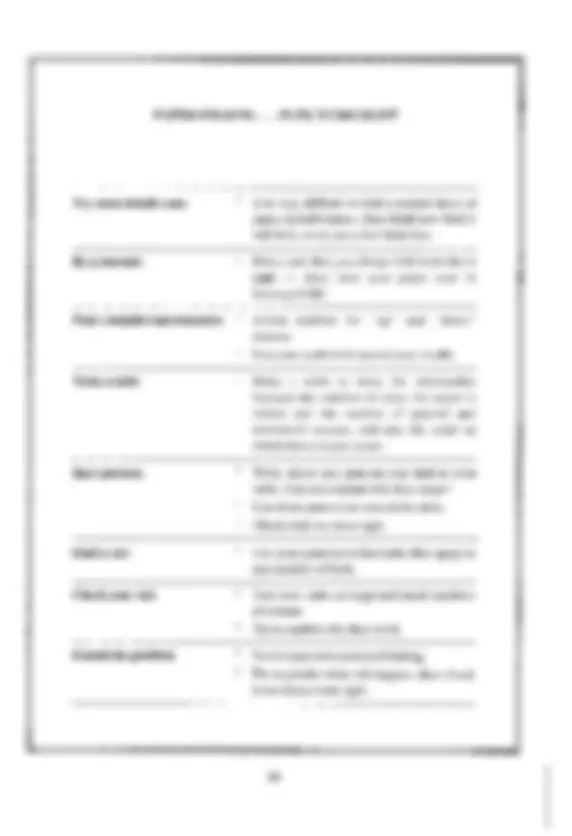
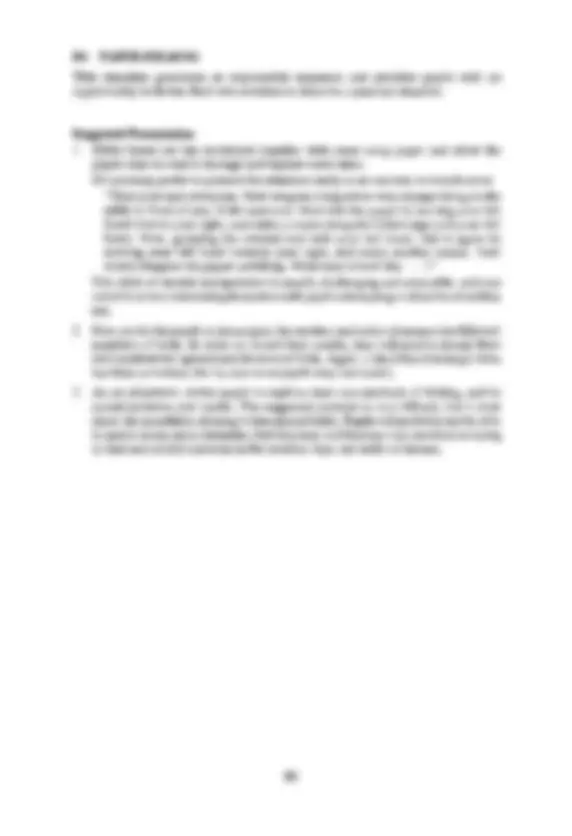
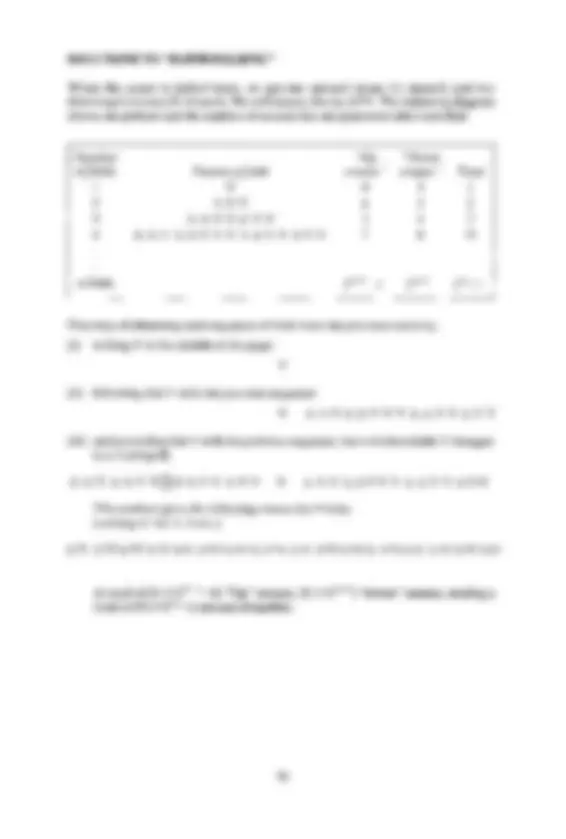
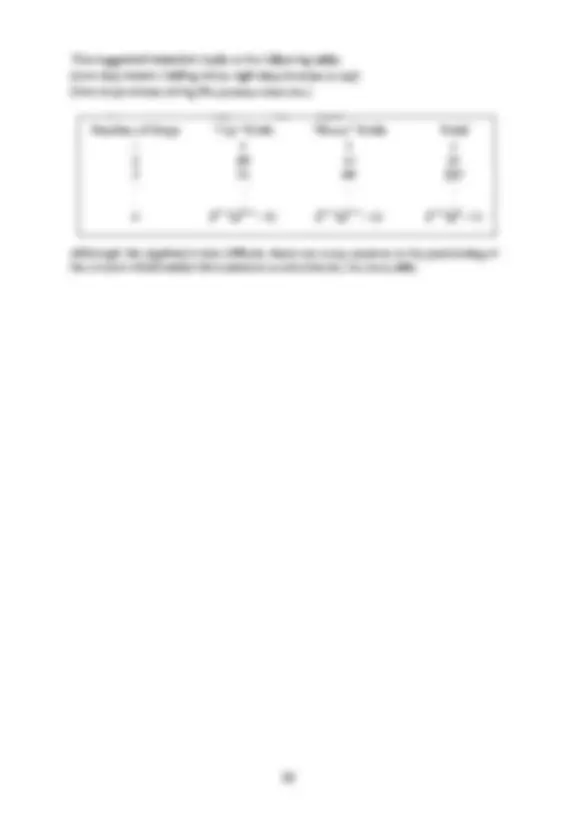

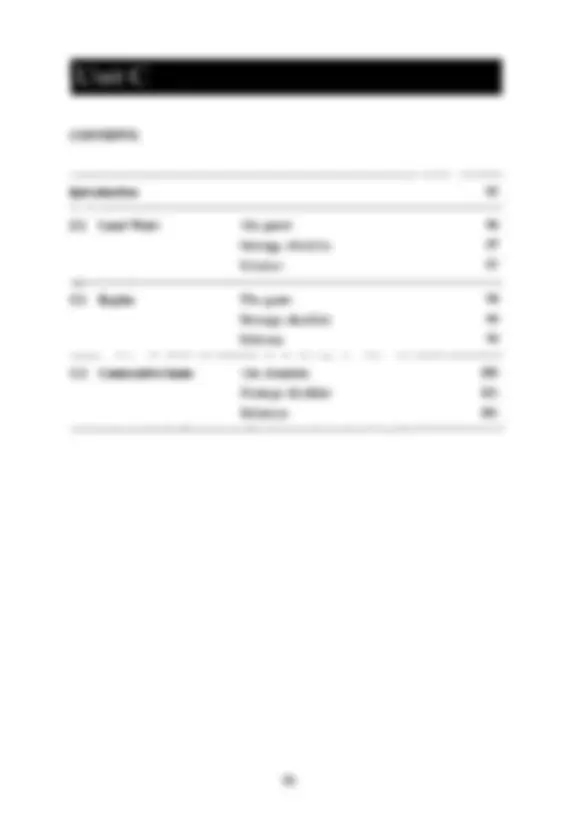
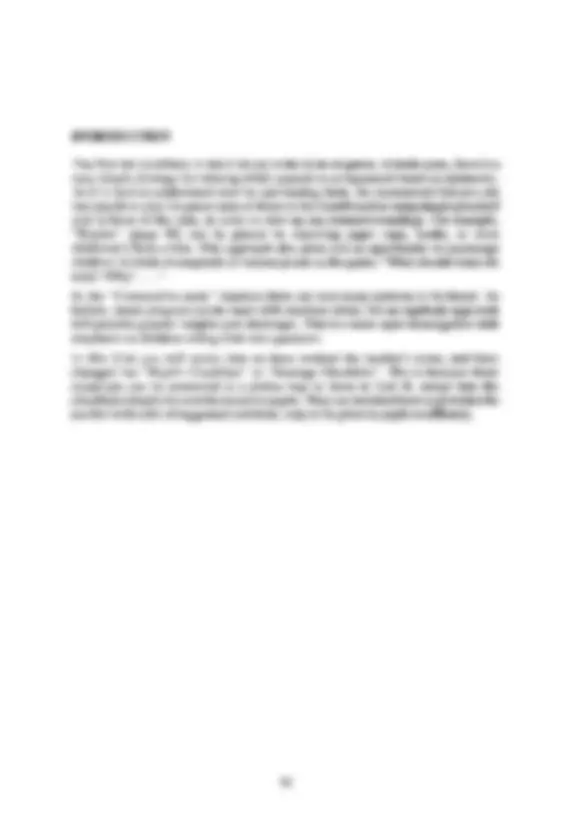
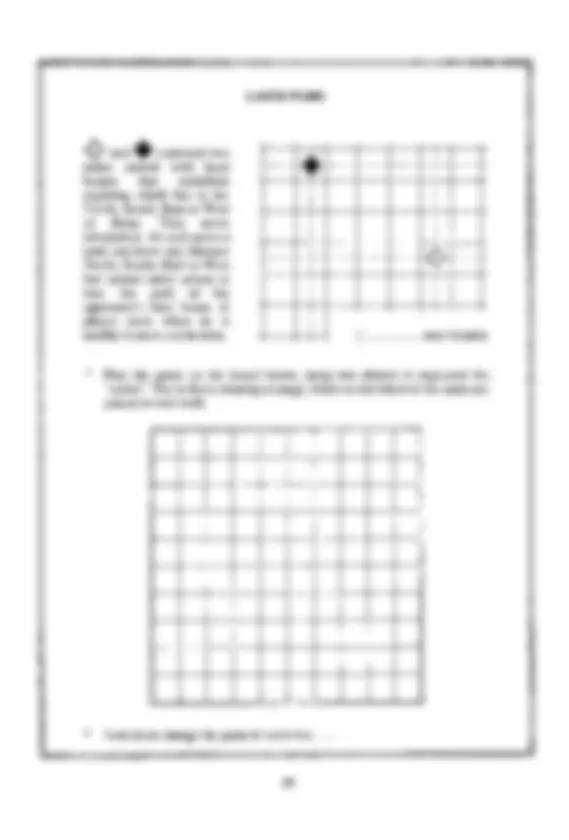
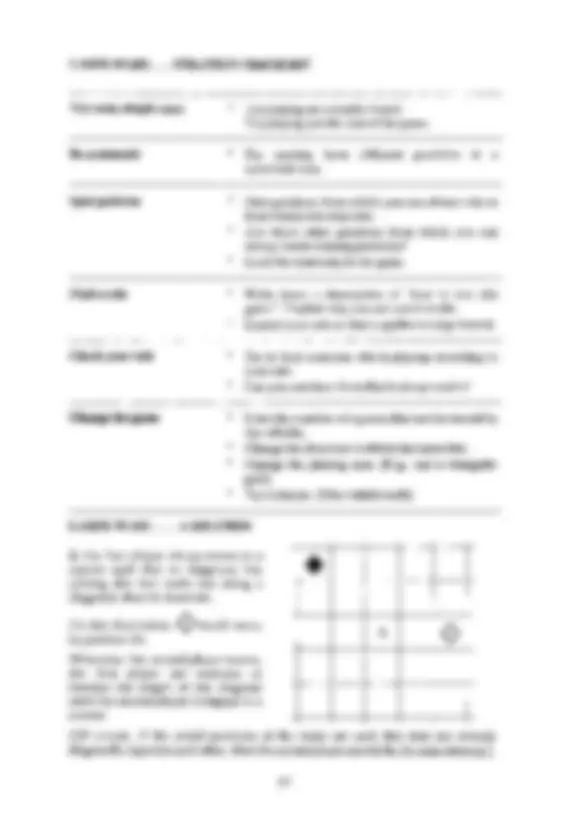
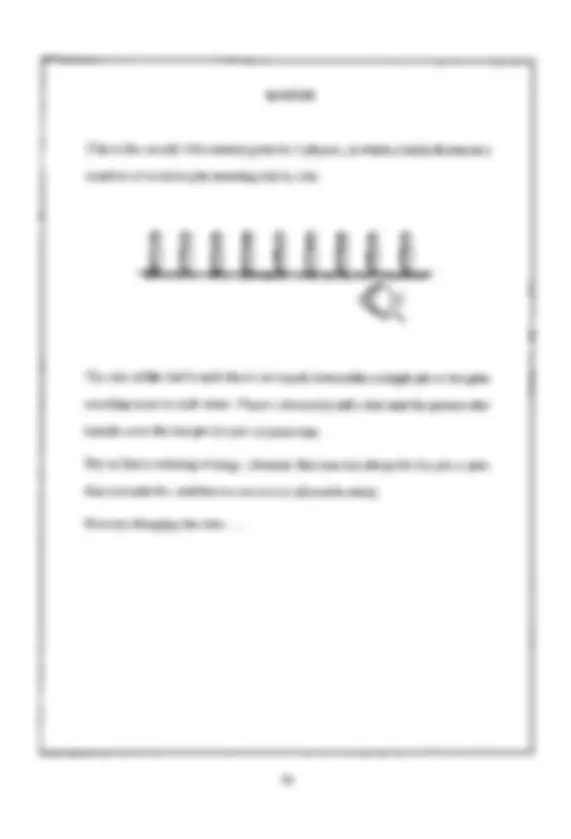
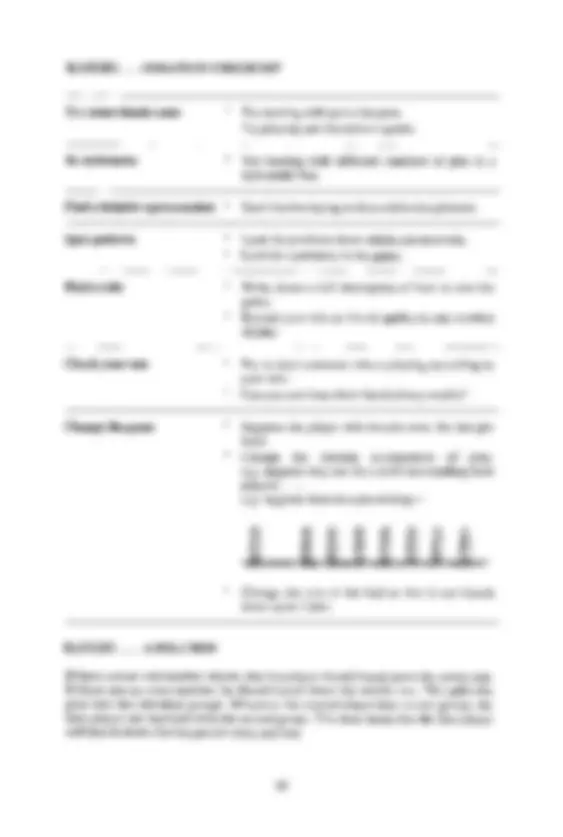
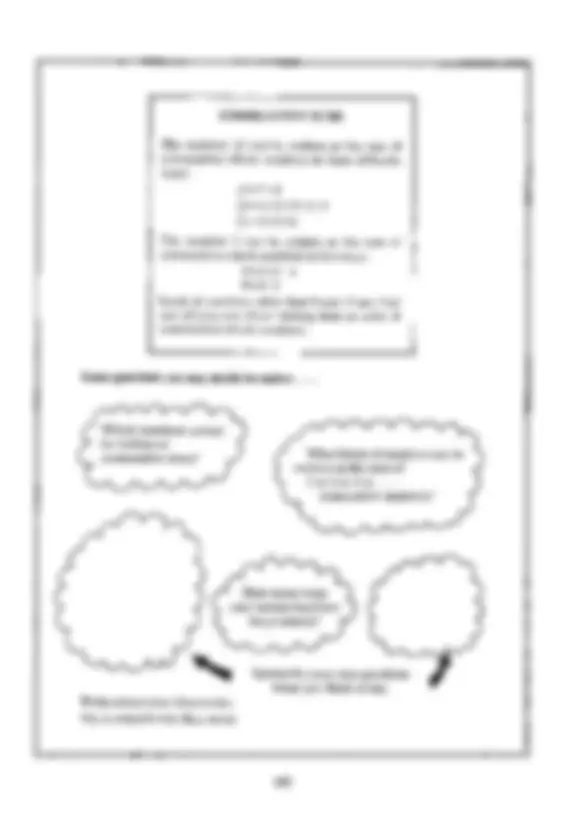


Study with the several resources on Docsity

Earn points by helping other students or get them with a premium plan


Prepare for your exams
Study with the several resources on Docsity

Earn points to download
Earn points by helping other students or get them with a premium plan
Community
Ask the community for help and clear up your study doubts
Discover the best universities in your country according to Docsity users
Free resources
Download our free guides on studying techniques, anxiety management strategies, and thesis advice from Docsity tutors
An educational module designed to help students develop strategic problem-solving skills through various activities and games. It covers topics such as reversing sequences, finding patterns in differences, and paper folding. The module emphasizes the importance of trying different approaches and reflecting on the problem-solving process.
Typology: Study notes
1 / 168

This page cannot be seen from the preview
Don't miss anything!





























































































Joint Matriculation Board Shell Centre for Mathematical Education
AUTHORS
This Module has been produced by the joint efforts of many teachers working-with the Shell Centre for Mathematical Education and the Joint Matriculation Board. It was developed as part of the Testing Strategic Skills programme which aims gradually to promote a balanced range of curriculum activities through the development of new examination questions.
The Module was compiled by the Shell Centre team: Alan Bell, Barbara Binns, Hugh Burkhardt, Rosemary Fraser, John Gillespie, David Pimm, Jim Ridgway, Malcolm Swan, Clare Trott, co-ordinated by Jim Ridgway and Clare Trott, and directed by Hugh Burkhardt.
Specific responsibility for the three sections of the book was as follows: Specimen Examinations Questions: John Pitts Classroom Materials: Malcolm Swan based on the work of a group of teachers, including: Barbara Binns, Mike Cannon, Alan Chisnall, Kath Cross, Tansy Hardy, Gill Hatch, Cath Mottram, David Wilson and the Shell Centre team, with additional help from Mark Allen, Anne Baxter, Ray Crayton, Beryl Footman, David Griffiths, Frank Knowles, Mary Robinson, Glenda Taylor co-ordinated by Susie Groves and Anne Haworth. Support Materials: Rosemary Fraser
This material has been developed and tested with teachers and pupils in over 30 schools, to all of whom we are indebted, with structured classroom observation by the Shell Centre team.
We gratefully acknowledge the help we have received from:
Paul Morby and the University of Birmingham Television and Film Unit in the making of the video material, Longman Micro SoftWare, the ITMA Collaboration, the Council for Educational Technology, and the SMILE group of the Inner London Education Authority for the use of the microcomputer materials, and Peter Wilson and his colleagues at the Joint Matriculation Board, together with the staff of Richard Bates Ltd. in the preparation of this Module, and finally Sue Crawford and Sheila Dwyer for much typing and even more patient support.
The book was designed and edited by Malcolm Swan.
EXPANDED CONTENTS
Introduction to the Module 6
Specimen Examination Questions 9
Each of these questions is accompanied by afull marking scheme illustrated with sample scripts. Contents 10 Introduction 11 "The Climbing Game" 12 "Skeleton Tower" 18 "Stepping Stones" 22 "Factors" 28 "Reverses" 34
Classroom Materials 39
Introduction to the Classroom Materials 41
Unit A Unit A is the basic core of the Module and should be completed. It will take about 'Oneweek and contains afull set of worksheets and teaching notes. Contents 43 Introduction 44 Introductory Problems 45 Al Organising Problems 46 A2 Trying Different Approaches 50 A3 Solving a Whole Problem 54 Some Solutions 56
UnitB During Unit B, the intention is to encourage children to solve problems with less help and to articulate and record their different approaches and methods. Four problems, "checklists" of useful strategies for pupils to use when in difficulty, full teaching notes and solutions areprovided. This Unitprovides roughly one week's work. Contents 70 Introduction 71 Bl "Pond Borders" 72 B2 "The First to 100Game" 76 B3 "Sorting" 80 B4 "Paper Folding" 88
UnitC Unit C is built around three tasks which differ in style. No printed guidance is offered to the pupils, but the teacher has a list of strategic hints which may be offered to those in difficulty. Solutions are provided. This Unit again occupies roughly one week. Contents 94 Introduction 95 C1 "Laser Wars" 96 C2 "Kayles" 98 C3 "Consecutive Sums" 100
A Problem Collection A collection of 15 problems and games to use as a supplement to the materials presented in Units A, Band C. Solutions and ideas for possible extensions are given. Contents 104 Introduction 105 Problems 106 "Painted Cube, Score Draws, Cupboards, Networks, Frogs, Dots, Diagonals, The Chessboard" Games 124 "The Spiral Game, Nim, First One Home, Pin Them Down, The 'I-IotFat Tune' Game, Dominoes, The Treasure Hunt".
Support Materials 139 These materials are divided into two parts - those that arepart of this book, and those that accompany the videotape and microcomputer programs in the rest of the pack. Both are written under the same headings and are usable together or independently. They offer support to individual, or groups of teachers who wish to develop their teaching methodology and explore wider implications of problem solving in the classroom. Contents 140 Introduction 141
Checklist for the Teacher Inside back cover
time to teaching mathematical strategies which are not tested in the examination. Consequently many pupils experience only two of the six elements listed here, exposition and practice. Cockcroft's list was drawn up after a great deal of consultation and consideration of educational research about the way children learn mathematics. This suggested that learning best takes place if the pupil experiences a variety of mathematical activities. The Board recognises that problem solving and investigational work should take place as an essential part of the mathematical curriculum, and that this is likely to happen on a reasonable scale only if these activities are reflected in the assessment procedure. Their importance is already recognised in the Board's current examination objectives, particularly the later ones in the list:
Knowledge and abilities to be tested The following list is intended to provide a general indication of the knowledge and abilities which the examination will be designed to test.
However, the types of questions currently set do not adequately test these higher level skills. This Module will allow the introduction of an appropriate question into the examination in a way that is accessible to the teachers and pupils that the Board serves. To ensure this, the Module offers teachers classroom material which has been carefully developed and tested, and teacher support materials, as well as detailed information about the change in the examination itself. These three elements of the Module: specimen examination questions and marking schemes with pupil answers, sample classroom materials and support materials will, we hope, give a clear picture of the intentjons. The successive trials of the Module have shown that they offer a straightforward way to realise those intentions.
CONTENTS
Reverses 34
INTRODUCTION
This Module introduces a somewhat new type of examination question in which the mathematical processes involved, especially the choice and explanation of strategies and discussion of results, are as important as the answers obtained. This is reflected in the marking schemes. The questions set will be drawn from a wide variety of problems which are loosely linked under the heading "Patterns and Numbers". The range of problems is not defined in the conventional way by specifying a topic area or listing the mathematical techniques involved. Instead, the problems will involve situations in which, starting from the consideration of some particular cases, a pattern has to be found and then formulated into a general rule. These processes are important throughout mathematics and number properties and patterns provide a suitable field in which they can be developed. It should be noted that, in the examination, candidates will be given credit for explanations of what has been attempted at each stage and for what has been discovered. More generally, mark schemes will be designed to give credit for: (i) showing an understanding of the problem, (ii) organising information systematically, (iii) describing and explaining the methods used and the results obtained, (iv) formulating a generalisation or rule, in words or algebraically. The following sample of questions gives an indication of the variety likely to occur in the examination. Sample marking schemes and their application to sample answers are provided. The mark8 given here indicate the proportion of credit assigned for the various parts of a question out of a total of 10 marks. In the examination the total mark given for a particular question will depend on its length and on where it appears in the question paper. Each of the questions in this sample would take up about 20 minutes of examination time.
THE CLIMBING GAME ••• MARKING SCHEME
(i) Showing an understanding of the rules of the game by systematically dealing with the various possible moves.
1 mark for indicating that Sarah can force a win by moving to point A or for indicating that she could lose if she moves to point B. 2 marks for a correct analysis of the situation if Sarah moves to point A including the consideration of both of Paul's possible moves. Part mark: 1 mark for an incomplete or unclear analysis. 3 marks for considering the situation if Sarah moves her counter to point B and making a correct analysis. Part marks: 2 marks for an analysis which is complete but unclear or which is clear but omits to consider one of the two possible moves for Sarah from point A or C. 1 mark for a more partial analysis.
(ii) Formulating and explaining a winning strategy for the game
4 marks for clear, complete and correct explanation. Part marks: 3 marks for incomplete or unclear but correct explanation. Up to 3 marks can be given for the following: 1 mark for recognition of symmetry. 1 mark for evidence of a systematic approach. 1 mark for correctly identifying some winning and/or losing positions above line m. or 2 marks for correctly identifying some winning and/or losing positions below line m (or above and below line m).
Finish
c. (^) A.
®
c..ljJl (~ ?a.u.L ~ ~1 bl4 ~ ~
Ip~~\ah ~ ~^ o •••^ ~ .0..C^ d.er-.. ~ ~·~SrQ. (LDod
lr 'SOSa.Y1 ~t.> ~ 6BUt® _'~ ~ a5 r-v. c:::tltif'It., ~ ~CiSf~' ,\ (1):)I..~d LS-..f.
r:lr-'15tI
START
()..Min I
<V0 ~.~~ r~ cnJ0:r
Part (ii) l\1.arkingExplanations
Explanations can be given using diagrams or verbal descriptions, or a combination of the two. Steven's explanation is almost entirely diagrammatic. His diagram shows the moves that Sarah must make and two alternative moves that Paul can make at each stage. The .cases which are not covered by the diagram follow from the symmetry of the situation and this is implied by Steven's statement: "Sarah can also win on the other side as well!"
By contrast Michael's explanation is more verbal. Whereas Steven considers sequences of moves from start to finish, Michael identifies winning positions, whiCh he clearly defines as positions he moves onto.
(Some other candidates may use an alternative definition of "winning positions" as points from which you can win if it is your tum to move.)
Both Steven and Michael are awarded the full 4 marks for their explanations.
(i) Showing an understanding of the problem by dealing correctly with a simple case. Answer: 66 2 marks for a correct answer (with or without working). Part mark: Give 1 mark if a correct method is used but there is an arithmetical error.
(ii) Showing a systematic attack in the extension to a more difficult case. Answer: 276 4 marks if a correct method is used and the correct answer is obtained. Part marks: Give 3 marks if a correct method is used but the work contains an arithmetical error or shows a misunderstanding (e.g. 13 cubes in the centre column). Give 2 marks if a correct method is used but the work contains two arithmetical errors/misunderstandings. Give 1 mark if the candidate has made some progress but the work contains more than two arithmetical errors/ misunderstandings.
(iii) Describing the methods used.
2 marks for a correct, clear, complete description of what has been done providing more than one step is involved. Part mark: Give 1 mark if the description is incomplete or unclear but apparently correct. J (iv) Formulating a general rule verbally or algebraically.
2 marks for a correct, clear, complete description of method. Accept "number of cubes=n(2n-l)" or equivalent for 2 marks. Ignore any errors in algebra if the description is otherwise correct, clear and complete. Part mark: Give 1 mark if the description is incomplete or unclear but shows that the candidate has some idea how to obtain the result for any given value of n.
~-.•.
..•...
...••. -- ....• (^) ...... (^) - '" '"^ "-^ "-^ ..•. .....• .•.•. - "- •••......• " "^ "^
'\
..... (^) '
"
"
, ..•. .....•^ '...•.. - •.••.. '"
"
'\ \ (^) "- "'- "
-....... (^) ..•.. '. (^) '\ (^) ,
, (^) , " " I
Ar'\QJa. 0 I
to buJcJ a
\ -'r" 'i'I'"'GO Q \ \
C"'~ h'$h .~ 1""'"':>~~ d1her t""'\vfYll::::ers
q ~~ .-.,0"5 h.
q -+- L ~)C:~);- (, x 4-~ 't" lb,c<+-)-+ ( ~)( ~ )-t{lt-~~4-"'3)~l~"l.() -to l'''' 4) ':. 153.